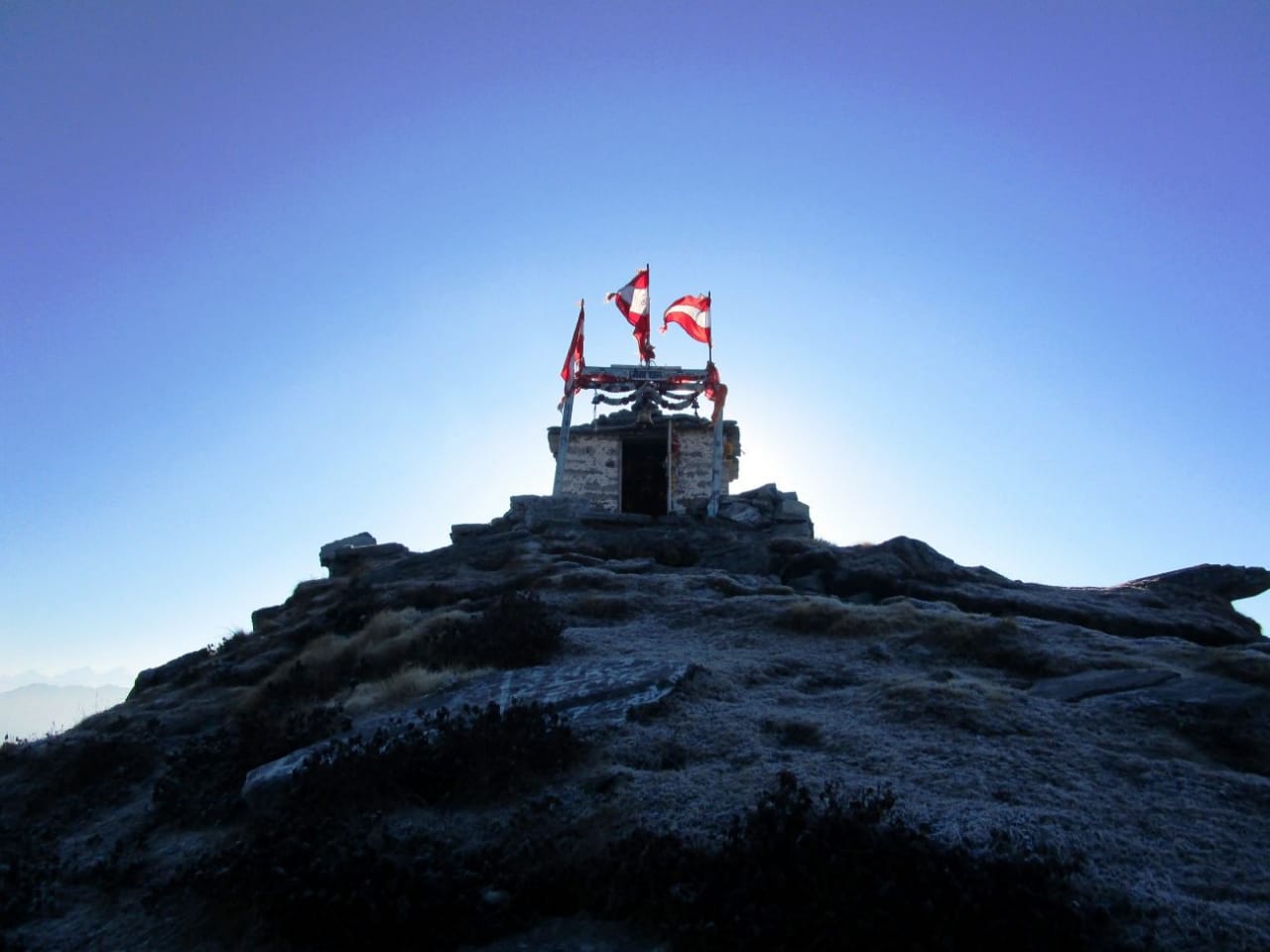Discover the Allure of Chopta Tungnath Trek and Chandrashila Summit Trek
The Chopta Tungnath Trek and Chandrashila Summit Trek are the ultimate Himalayan adventures, offering both natural beauty and spiritual peace. The Tungnath Temple Trek leads trekkers through scenic landscapes, dense forests, and beautiful meadows, culminating at the sacred Tungnath Temple, dedicated to Lord Shiva. Situated at an elevation of 3,680 meters, the temple provides an enriching experience with its calm atmosphere and scenic surroundings, making it an ideal destination for both trekkers and pilgrims.
For those seeking a higher challenge, the Chandrashila Summit Trek is the perfect next step. From the Tungnath Temple, a short but demanding ascent leads to the Chandrashila Summit, which stands tall at 4,000 meters. The view from the top is nothing short of spectacular, with snow-capped peaks like Nanda Devi, Trishul, and Chaukhamba offering panoramic views that are sure to take your breath away. The Chopta Chandrashila Trek offers a thrilling adventure, with the final summit providing a sense of accomplishment that makes every step worth it.
For travelers from Delhi, the Chopta Chandrashila Trek from Delhi is easily accessible with many Chopta tour packages available to make the journey seamless and comfortable. These Chopta tour packages offer tailored itineraries, combining the adventure of the Tungnath trek with the serenity of the Chandrashila summit, providing a complete and unforgettable trekking experience. Whether you’re an experienced trekker or a first-timer, these treks are sure to leave you with lasting memories of the stunning beauty of Uttarakhand.
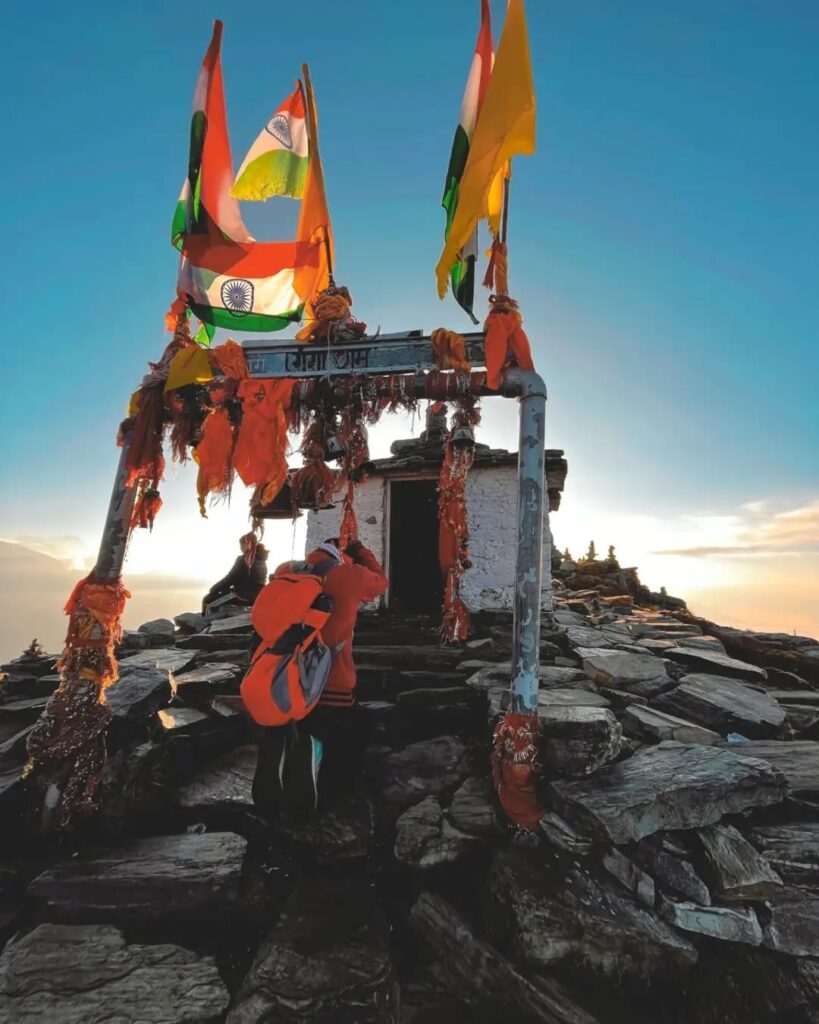
Highlights of the Tungnath Chandrashila Trek from Delhi
1. The Journey Begins in Chopta
Chopta serves as the base for many treks, including the Tungnath Temple Trek and the Chandrashila Summit Trek. Its lush green meadows and dense forests of rhododendron and oak set the stage for the adventure ahead.
Opting for a Chopta Tour Package simplifies your travel arrangements, ensuring a hassle-free journey from Delhi to Chopta. These packages typically include transportation, accommodation, and guided treks, making them ideal for both solo adventurers and group travelers.
2. Tungnath Temple Trek: A Spiritual Sojourn
The Tungnath Temple Trek is the centerpiece of the Chopta Tungnath Trek. At an altitude of 3,680 meters, Tungnath is revered as one of the Panch Kedar temples, attracting both pilgrims and trekkers.
The trek to Tungnath is moderately challenging and takes around 3-4 hours. The well-defined trails are flanked by wildflowers, chirping birds, and awe-inspiring views, ensuring every step feels rewarding. Once at the temple, the spiritual ambiance and the snow-clad peaks surrounding you make the journey truly worthwhile.
3. Chandrashila Summit Trek: Conquering New Heights
After visiting Tungnath, many adventurers continue their journey to Chandrashila. The Chandrashila Summit Trek is a relatively steep climb of around 1.5 kilometers from Tungnath.
At an altitude of 4,000 meters, the summit offers an unmatched 360-degree view of the Garhwal and Kumaon Himalayas. Sunrise from Chandrashila is a sight to behold, with golden hues lighting up the snowy peaks. This experience alone makes the Chopta Chandrashila Trek from Delhi a bucket-list-worthy adventure.
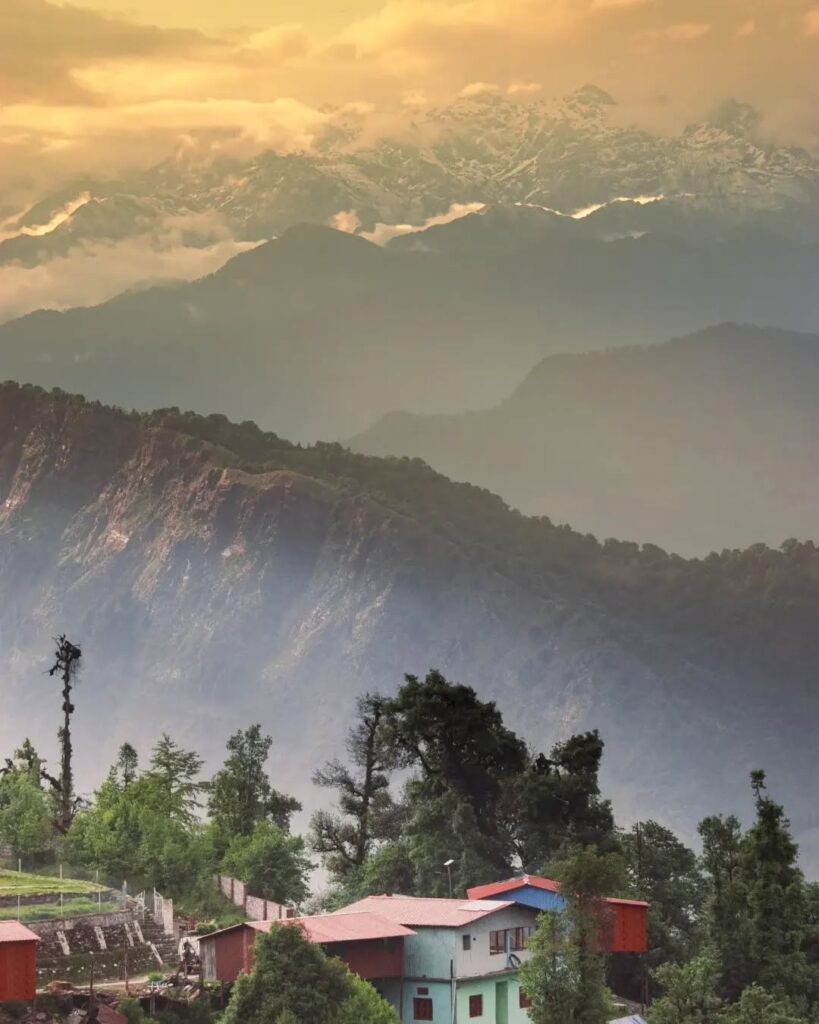
The Unique Appeal of Chopta Chandrashila Trek from Delhi
What sets the Chopta Chandrashila Trek from Delhi apart is its accessibility combined with its awe-inspiring beauty. Unlike more remote Himalayan treks, this adventure can be completed over a long weekend, making it a popular choice for urban dwellers seeking a quick escape.
- Beginner-Friendly Trek:
The trails to Tungnath and Chandrashila are well-marked, making them suitable for first-time trekkers. - Diverse Experiences:
From the spiritual aura of Tungnath Temple to the adrenaline rush of summiting Chandrashila, this trek offers something for everyone. - A Photographer’s Dream:
The changing landscapes, from verdant meadows to snow-draped peaks, provide endless opportunities for capturing stunning photos.
Tips for a Memorable Chopta Chandrashila Trek
- Acclimatize Properly:
Spend a day in Chopta to acclimatize to the altitude before beginning the trek. - Hire a Local Guide:
A guide can enhance your experience by sharing insights about the region’s flora, fauna, and culture. - Stay Hydrated and Energized:
Carry enough water and snacks to stay fueled during the trek. - Respect the Environment:
Follow the principles of “Leave No Trace” to preserve Chopta’s pristine beauty for future generations.
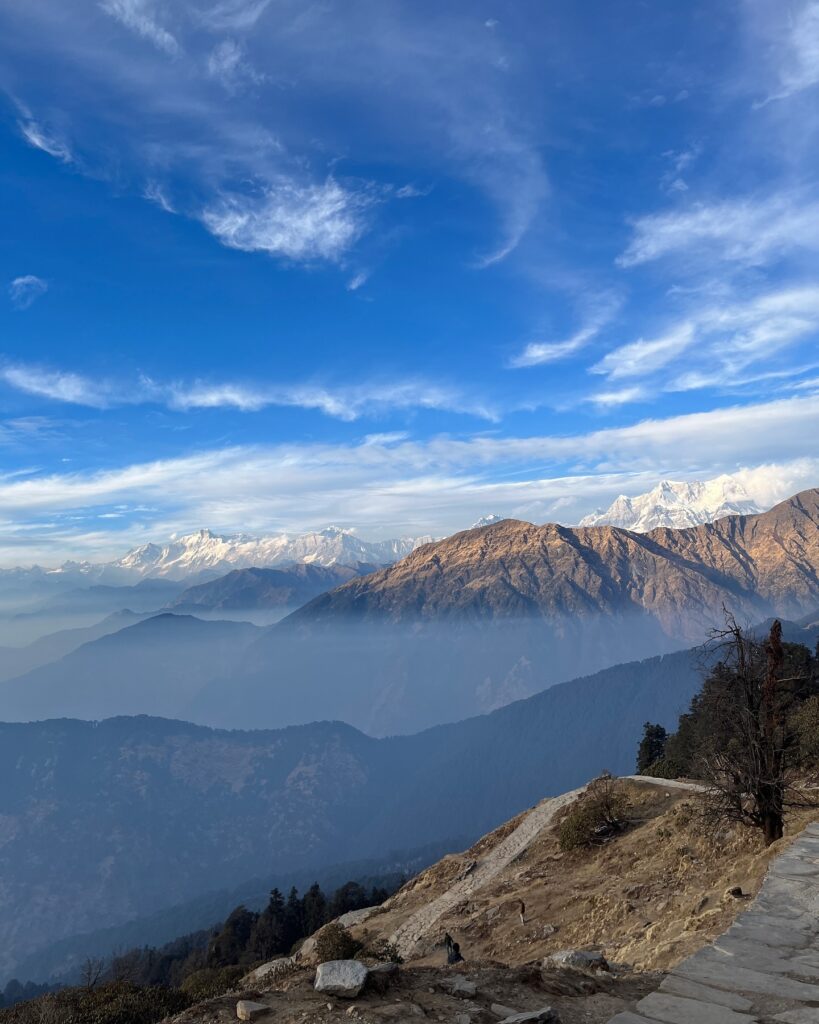
Beyond Trekking: Exploring Chopta’s Hidden Gems
While the Tungnath Chandrashila Trek is the highlight of any visit, Chopta offers much more:
- Deoria Tal: A serene lake surrounded by dense forests, perfect for a day hike.
- Kartik Swami Temple: A lesser-known yet equally enchanting trek.
- Bird Watching: Chopta is a haven for bird enthusiasts, with species like monal pheasants and Himalayan woodpeckers.
The Future of Chopta Tourism
The Future of Chopta Tourism: Balancing Development and Sustainability
The serene meadows and majestic peaks of Chopta have long captivated the hearts of nature lovers, adventure seekers, and spiritual pilgrims. Known for its iconic Chopta Tungnath Trek and the awe-inspiring Chandrashila Summit Trek, Chopta is emerging as a sought-after travel destination. As its popularity grows, the future of Chopta tourism hinges on a delicate balance between sustainable development and preserving its natural beauty.
This article delves into what lies ahead for Chopta, addressing opportunities, challenges, and the pivotal role of responsible tourism in safeguarding its allure.
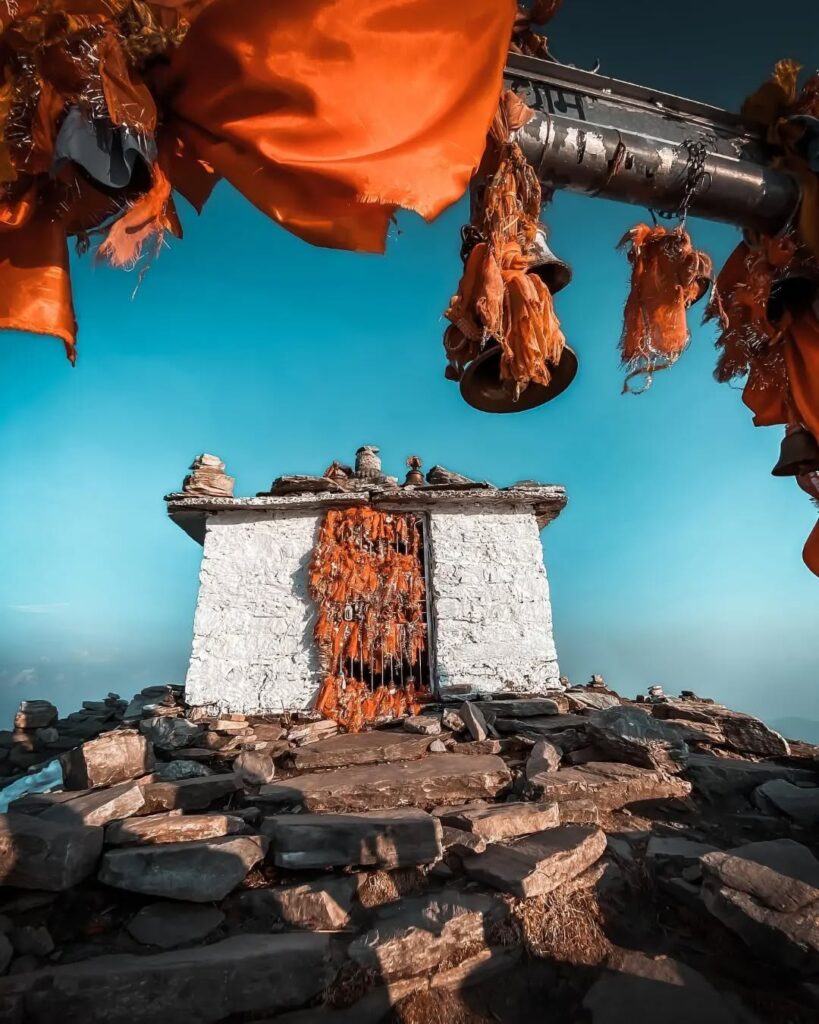
Chopta’s Growing Appeal as a Travel Hub
- A Trekkers’ Paradise:
The Chopta Tungnath Trek and Chandrashila Trek attract thousands annually. With trekking routes suitable for both beginners and experienced hikers, Chopta has established itself as a prime destination for adventure enthusiasts. - Spiritual Tourism:
The Tungnath Temple Trek, leading to the highest Shiva temple in the world, is a major draw for spiritual travelers. Its serene ambiance and religious significance make it a cornerstone of Chopta’s tourism appeal. - Accessibility from Major Cities:
The increasing availability of Chopta tour packages, including the popular Chopta Tungnath Trek from Delhi, has made the region more accessible to urban travelers seeking a rejuvenating Himalayan getaway.
Opportunities Shaping Chopta’s Future Tourism
1. Year-Round Tourism Potential
Chopta offers unique experiences across seasons, from snow-covered treks in winter to vibrant rhododendron blooms in spring. This versatility allows for tourism to flourish year-round.
- Winter Activities: The snow-laden Chopta Chandrashila Trek offers unparalleled winter trekking opportunities.
- Spring and Summer: Ideal for nature walks, bird watching, and spiritual visits to Tungnath Temple.
- Autumn: Clear skies and panoramic views of Himalayan peaks enhance the trekking experience.
2. Eco-Tourism and Responsible Travel
As awareness of sustainable tourism grows, initiatives such as eco-friendly accommodations, waste management systems, and guided treks emphasizing “Leave No Trace” principles can position Chopta as a model for eco-tourism.
3. Enhanced Infrastructure for Tourism
Improved roads, better connectivity, and modern amenities in Chopta and surrounding areas will encourage more tourists to explore the region. Thoughtfully planned infrastructure can support increased footfall without harming the environment.
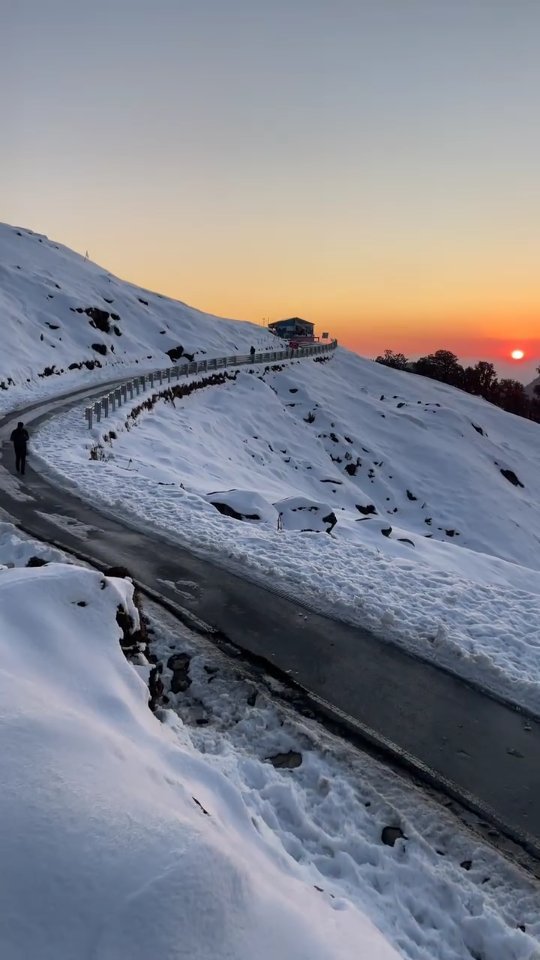
Challenges to Sustainable Development in Chopta
1. Environmental Impact
The rising popularity of the Chopta Chandrashila Trek and other attractions has led to an increase in foot traffic. Unregulated tourism poses threats such as littering, deforestation, and wildlife disturbances.
2. Balancing Commercialization and Preservation
While the demand for Chopta tour packages grows, unchecked commercialization can detract from the region’s untouched charm. Striking a balance between meeting tourists’ needs and protecting natural habitats is crucial.
3. Overcrowding During Peak Seasons
Tourist hotspots like the Tungnath Temple Trek and Chandrashila Summit Trek experience overcrowding during peak seasons. This not only diminishes the quality of the visitor experience but also puts pressure on local resources.
4. Impact on Local Communities
While tourism creates employment opportunities, it can also strain local infrastructure and disrupt traditional ways of life if not managed responsibly.
The Role of Tour Packages in Shaping Chopta’s Future
Tailored Experiences with Chopta Tour Packages
Customized Chopta tour packages cater to diverse interests, whether it’s adventure trekking, spiritual exploration, or a combination of both. Popular packages include:
- Chopta Tungnath Trek from Delhi: Designed for urban travelers seeking a weekend escape.
- Chopta Chandrashila Trek: A comprehensive package combining scenic beauty with thrilling treks.
- Eco-Friendly Tours: Packages promoting sustainable practices and stays at eco-lodges.
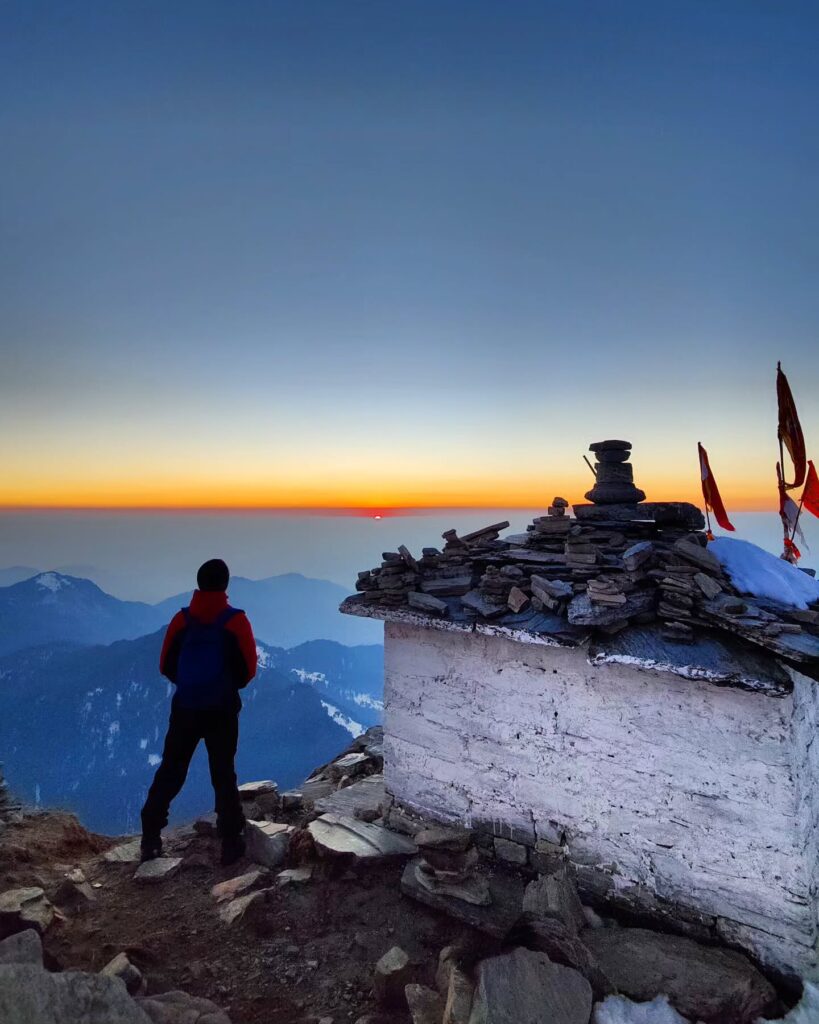
Promoting Offbeat Trails
Tour operators can help reduce overcrowding by promoting lesser-known trails and attractions around Chopta, such as Deoria Tal and Kartik Swami Temple.
Innovative Trends Shaping the Future
1. Technology in Trekking
Modern tools like GPS-guided treks and mobile apps with trail maps can enhance the trekking experience, ensuring safety and convenience for travelers.
2. Virtual Tourism
For those unable to visit in person, virtual tours showcasing the Tungnath Temple Trek, Chandrashila Summit Trek, and surrounding landscapes could offer a glimpse of Chopta’s charm while inspiring future trips.
3. Wellness Tourism
With growing interest in wellness retreats, Chopta’s serene environment makes it an ideal location for yoga camps, meditation retreats, and nature therapy programs.
Sustainable Practices for a Better Tomorrow
- Community Involvement:
Empowering local communities through tourism initiatives can foster a sense of ownership and ensure that the benefits of tourism are equitably shared. - Eco-Friendly Accommodations:
Promoting green accommodations like solar-powered guesthouses and campsites can reduce the environmental footprint of tourism in Chopta. - Educational Campaigns:
Awareness campaigns focusing on responsible trekking and waste management can encourage tourists to contribute positively to Chopta’s ecosystem.
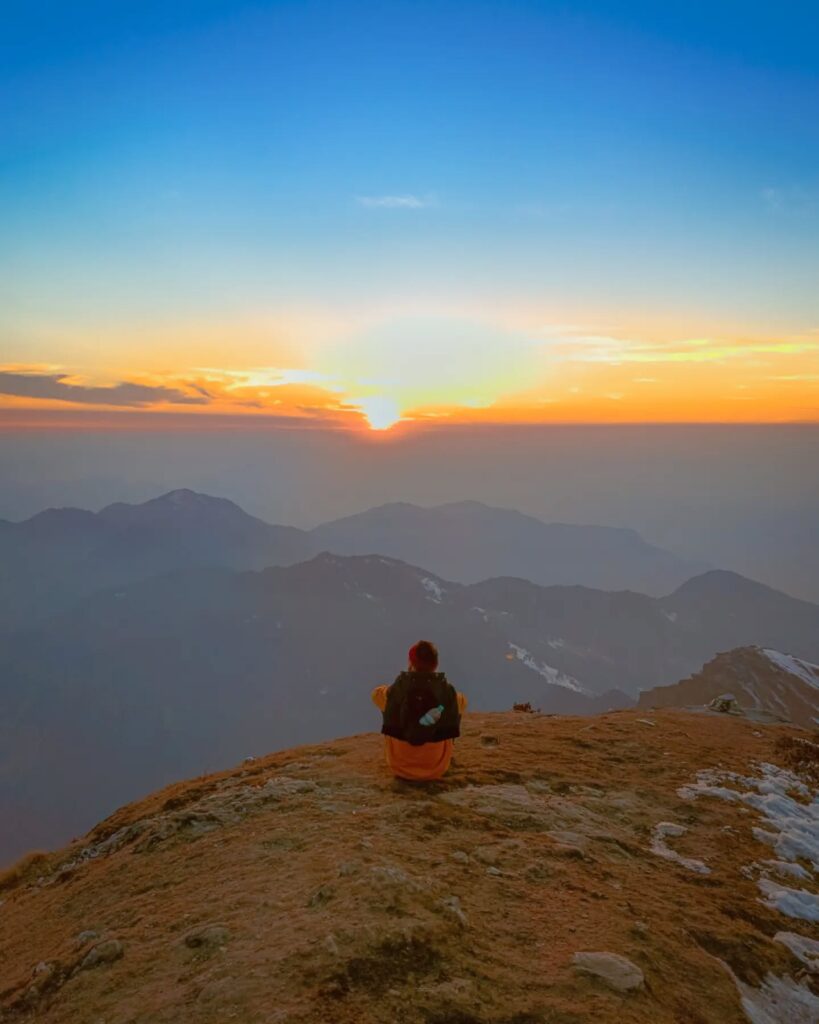
Collaborative Efforts for Growth
The future of Chopta tourism relies on collaboration between local authorities, tour operators, environmental organizations, and travelers. Key steps include:
- Developing eco-tourism policies that prioritize sustainability.
- Training local guides to enhance visitor experiences while promoting conservation.
- Offering incentives for businesses that adopt eco-friendly practices.
The Path Ahead: A Vision for Chopta
As the demand for treks like the Chopta Tungnath Trek and Chandrashila Summit Trek continues to grow, Chopta has the potential to become a global model for sustainable mountain tourism. By embracing responsible travel practices and fostering community participation, Chopta can preserve its pristine landscapes while welcoming adventurers from around the world.
Cost Estimation for Chopta Trekking Trips: Planning Your Himalayan Adventure
Chopta, known as the “Mini Switzerland” of Uttarakhand, offers some of the most stunning trekking trails in the Indian Himalayas. Whether you are embarking on the Chopta Tungnath Trek, aiming for the Chandrashila Summit Trek, or planning a Chopta tour package, it’s essential to know the cost involved to make your trekking trip a reality. From travel and accommodations to guide services and permits, understanding the breakdown of costs can help you budget better and ensure a smooth and enjoyable adventure.
This guide will explore the estimated costs for Chopta trekking trips, focusing on the popular Tungnath Temple trek and Chandrashila Trek, and provide insight into the various factors influencing the cost of trekking in this beautiful region.
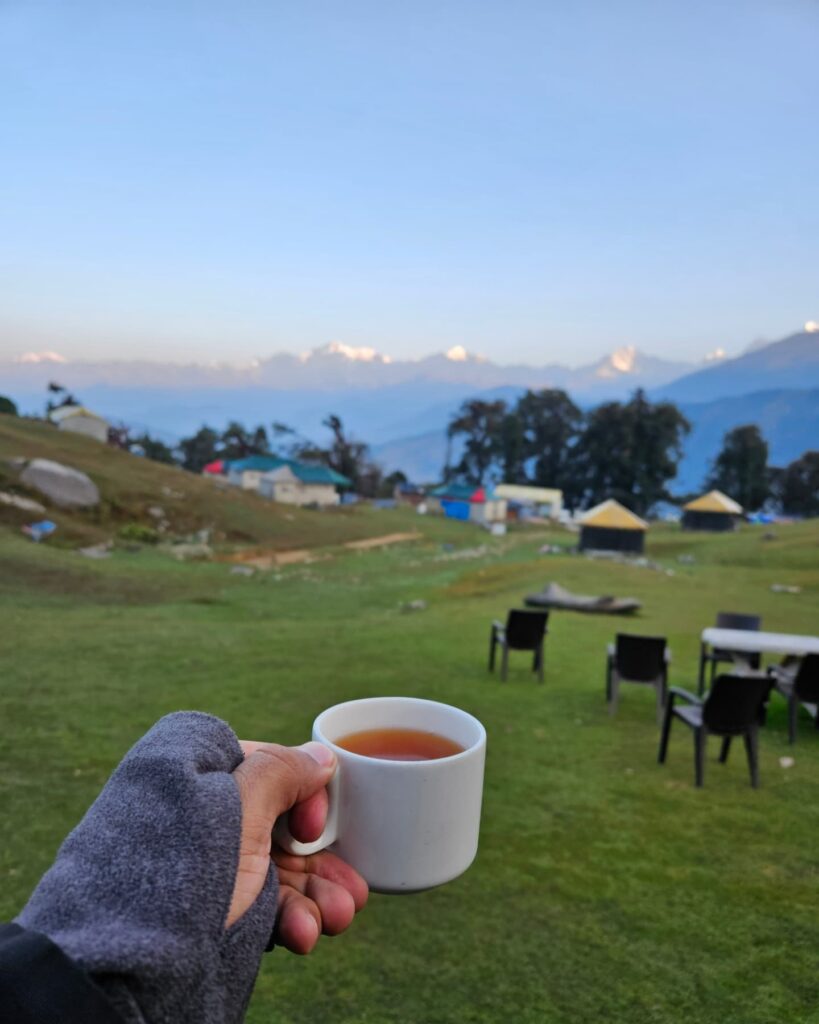
Factors Influencing the Cost of Chopta Trekking Trips
When planning your Chopta Tungnath Trek from Delhi or any trekking expedition to Chopta, several factors will affect the total cost. These include travel arrangements, accommodation, trekking permits, meals, and guide charges.
1. Travel Costs
The journey to Chopta starts with reaching this charming village, and there are different ways to travel from your city of origin. The primary travel options for most trekkers are either by road or by rail.
- By Road:
Traveling by road is the most common and economical option. A one-way trip from Delhi to Chopta by bus or taxi can cost between INR 1,500 and INR 4,500 per person, depending on the mode of transport and the type of vehicle. Private cabs are more expensive but offer more comfort and flexibility. - By Train:
If you prefer traveling by train, the nearest railway station is in Rishikesh or Haridwar. From there, you will need to take a bus or taxi to reach Chopta. A round-trip train fare (second-class sleeper) can range from INR 500 to INR 1,500 per person.
2. Accommodation Costs in Chopta
Chopta offers a variety of accommodation options, from basic guesthouses to luxurious resorts. The cost depends on the type of stay and the time of year you’re traveling.
- Budget Stays:
For those traveling on a budget, staying in guesthouses or budget hotels in Chopta will cost anywhere between INR 500 and INR 1,000 per night. Homestays are also an excellent option, with rates starting from INR 600 per night. - Mid-Range and Luxury Stays:
For more comfortable options, such as resorts or hotels with modern amenities, you can expect to pay between INR 2,000 and INR 4,000 per night. During the peak trekking season, prices may rise slightly. - Camping Options:
For adventure lovers, camping is a great way to experience the pristine beauty of the Himalayas. Camping near Tungnath Temple or along the Chopta Chandrashila trek can cost around INR 1,500 to INR 3,000 per night, depending on whether you choose basic or premium camping services.
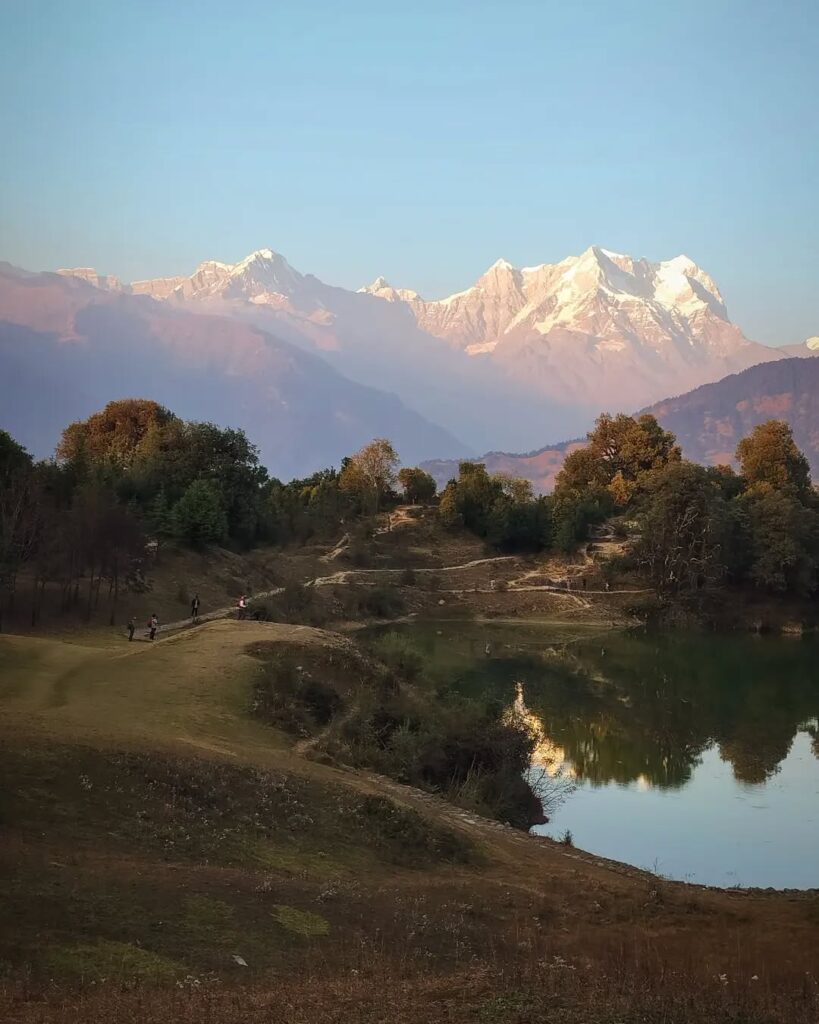
3. Guide and Trekking Support Services
Hiring a guide is highly recommended, especially for first-time trekkers. A professional guide helps ensure safety and provides valuable insights into the trek.
- Guide Fees:
Guide charges typically range from INR 1,500 to INR 3,500 per day, depending on the trek’s difficulty and duration. For the Tungnath Temple Trek, a local guide will be knowledgeable about the terrain, making the hike safer and more enjoyable. - Porter Services:
If you prefer to carry a lighter load, hiring a porter is an excellent option. Porter charges are usually between INR 800 and INR 1,500 per day. - Group Treks:
Group trekking packages can reduce individual costs significantly. Organized group treks generally offer all-inclusive pricing, which includes transportation, guides, accommodation, meals, and trekking permits. The cost of these group tours typically ranges from INR 7,000 to INR 12,000 per person for a 3-day trek.
4. Meals and Refreshments
Meals are a crucial part of any trek, and they are usually served at tea stalls, small eateries, or guesthouses along the route. The cost for meals during the trek is relatively affordable, especially for basic meals like dal, rice, and vegetables.
- Breakfast and Lunch:
On average, a simple breakfast will cost INR 150-300, while a full lunch may cost around INR 200-400 per person. - Dinner:
A typical dinner at guesthouses or camping sites will range from INR 250-500 per person. - Snacks and Beverages:
Don’t forget to budget for additional expenses like tea, coffee, energy snacks, and water, which can cost INR 50-150 at various stops during the trek.
5. Permits and Entry Fees
Most trekking routes in Chopta, including the Chopta Chandrashila Trek, require permits, especially if you’re trekking in protected forest areas or high-altitude zones. Permits usually cost around INR 50-150 per person for national park entry. Specific trekking routes like the Tungnath Temple Trek may require additional registration fees, which can cost around INR 100-200 per person.
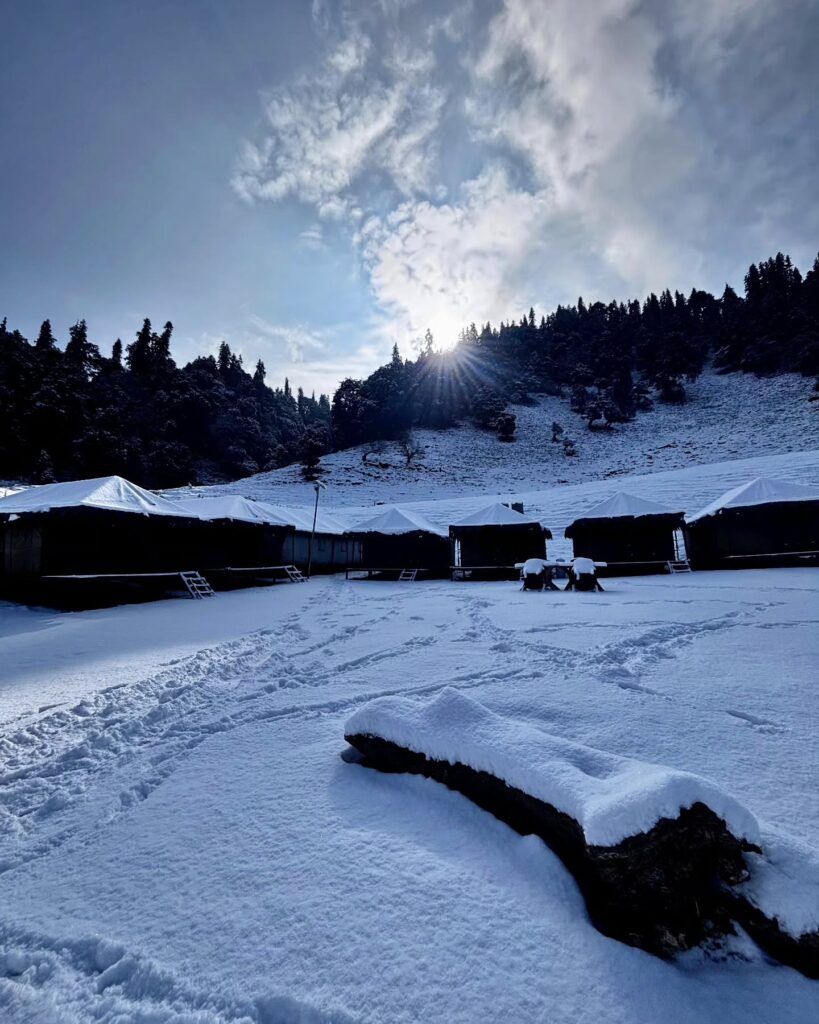
Estimated Cost Breakdown for a 3-Day Chopta Trekking Trip
To give you a better idea of how much a Chopta Tungnath Trek might cost, here’s an estimated breakdown for a typical 3-day trekking trip to Chopta:
| Category | Estimated Cost (INR) |
|---|---|
| Travel (from Delhi) | 2,500 – 4,500 |
| Accommodation (per night) | 1,000 – 3,000 |
| Meals (per day) | 600 – 1,200 |
| Guide Fee (per day) | 1,500 – 3,500 |
| Porter Fee (optional) | 800 – 1,500 |
| Permits and Entry Fees | 150 – 300 |
| Camping Fee (optional) | 1,500 – 3,000 |
| Total Estimated Cost | 6,550 – 13,500 |
This estimate assumes that you are traveling from Delhi and using basic trekking services. If you prefer more luxury or additional services, such as premium camping or a personalized trekking package, your overall costs will increase.
Hidden Facts About Tungnath Temple: Unveiling the Secrets of the Himalayan Shrine
Tungnath Temple, perched at an altitude of 3,680 meters in the mighty Himalayas of Uttarakhand, is not only a religious gem but also a place of great historical and cultural significance. As part of the revered Chopta Tungnath Trek, it attracts pilgrims, trekkers, and adventure enthusiasts from all corners of the world. While its religious importance is widely known, there are numerous lesser-known facts about the Tungnath Temple trek that add to its mystique and allure. From its ancient origins to the spiritual and natural wonders surrounding it, let’s dive into some hidden facts about Tungnath Temple that most visitors are unaware of.
The Ancient History of Tungnath Temple
Tungnath Temple is believed to be over 1,000 years old, and its history is steeped in myth and legend. It is dedicated to Lord Shiva, one of the most important deities in Hinduism. According to local folklore, the temple was built by the Pandavas, the five brothers from the epic Mahabharata, to seek Lord Shiva’s blessings. They constructed the temple after their great battle at Kurukshetra to absolve themselves of their sins.
Interestingly, there is little historical evidence of who exactly built the temple, and much of its history remains wrapped in mystery. The legend that the Chopta Tungnath trek is intertwined with the Pandavas continues to capture the imaginations of those who visit the temple.
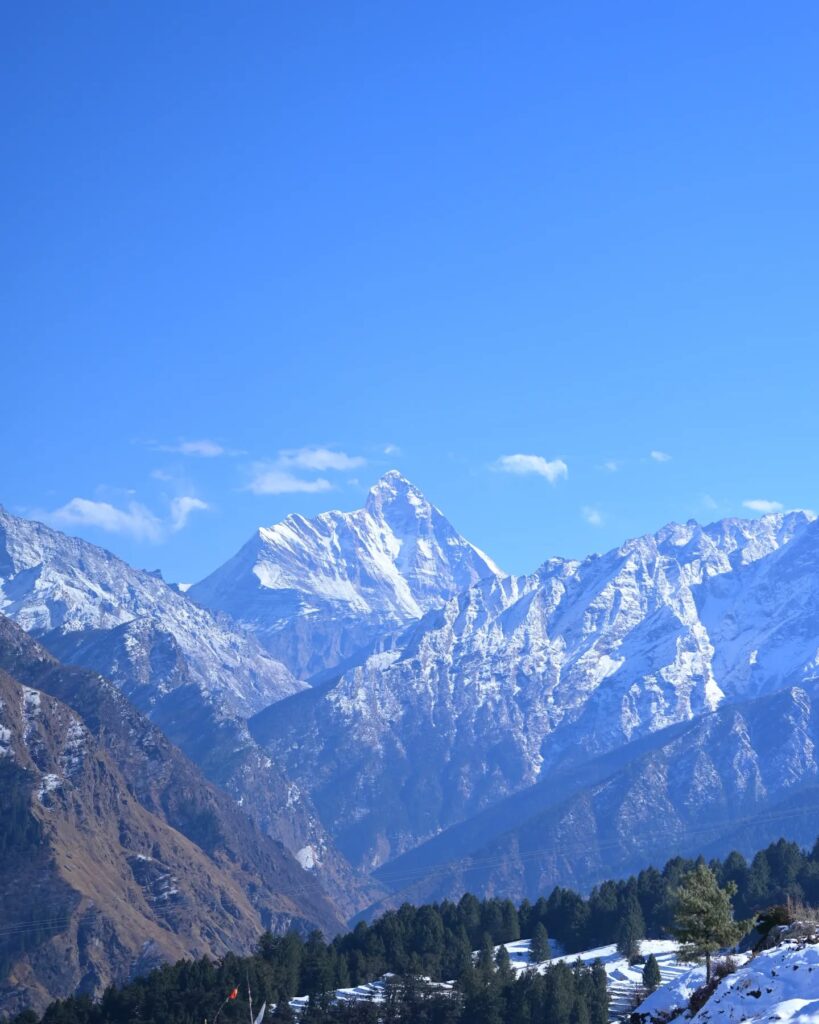
A Sacred Part of the Panch Kedar
Tungnath Temple is one of the five temples that form the Panch Kedar, a group of temples dedicated to Lord Shiva in the Garhwal region of Uttarakhand. The Panch Kedar includes the temples of Kedarnath, Tunganath, Rudranath, Madhyamaheshwar, and Kalpeshwar. Among these, Tungnath is the highest of them all, making it a must-visit pilgrimage site for devotees and trekkers alike.
The temple is located in a remote region of the Himalayan range, and visiting it forms an essential part of a Chopta Chandrashila trek. The high altitude adds a sense of mysticism and reverence to this ancient shrine, making it a coveted destination for those seeking divine blessings.
The Unique Architecture of Tungnath Temple
One of the most fascinating aspects of Tungnath Temple is its unique architecture. Unlike other temples in India, the Tungnath Temple is built in a style that reflects the local Garhwali tradition, which incorporates elements of both Hindu and Tibetan design. The temple structure is made of stone, with a simplistic yet awe-inspiring design that blends harmoniously with the surrounding environment.
The temple features intricate carvings and symbols that are said to represent various elements of nature, such as mountains, trees, and animals. The architecture is not grand or ostentatious, which is a deliberate reflection of the simplicity and humbleness of Lord Shiva.
The Importance of the Tungnath Trek for Devotees
Many visitors to Tungnath Temple come for religious reasons, but the Tungnath Temple trek is also considered an important part of the pilgrimage. The trek, which begins from Chopta, is steep and challenging but incredibly rewarding. The route is surrounded by lush forests of deodar and rhododendron, offering trekkers a tranquil and scenic experience.
Interestingly, while the trek is tough, it is considered a purification journey. As trekkers ascend to Tungnath Temple, they leave behind their worldly cares, symbolically purging themselves of their sins and impurities. The physical effort involved in the trek is believed to cleanse the soul, making the arrival at the temple even more significant.
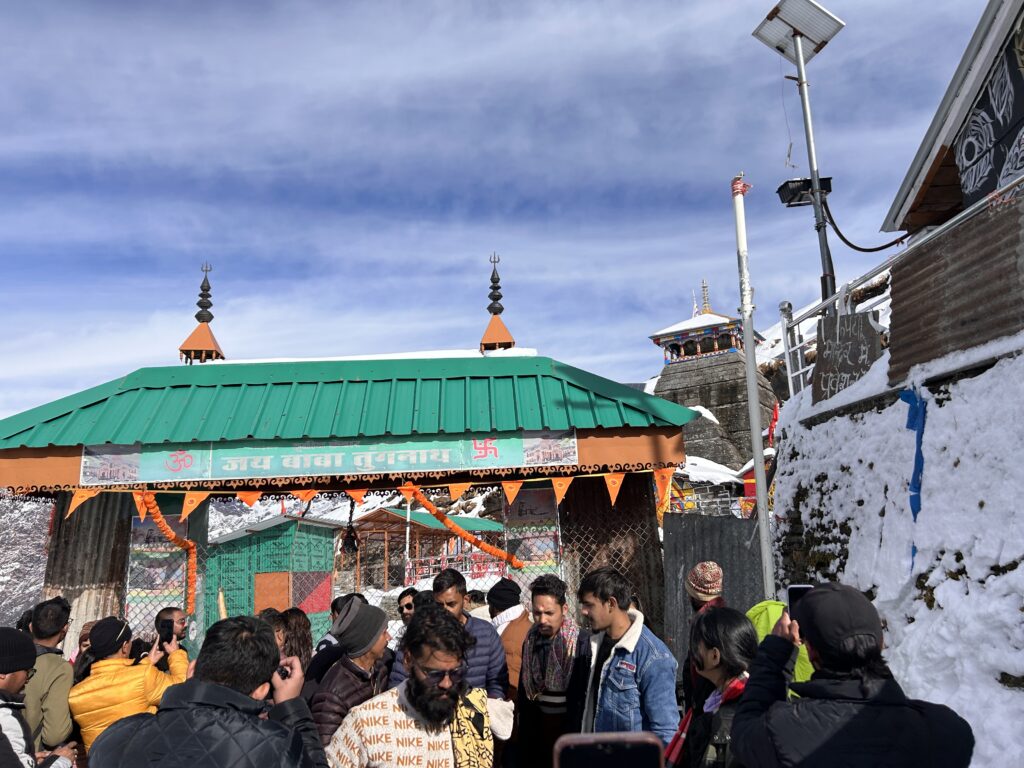
The Spiritual Significance of the Chandrashila Summit
The summit of Chandrashila, located above Tungnath Temple, is often considered just as important as the temple itself. While many come to visit the temple, the true spiritual experience lies in reaching the Chandrashila Summit Trek. At 4,000 meters above sea level, the summit offers breathtaking panoramic views of the surrounding peaks, including Nanda Devi, Trishul, and Chaukhamba.
It is said that Lord Rama meditated at the Chandrashila summit, and the place is associated with immense spiritual energy. Many pilgrims, after visiting Tungnath Temple, continue their journey to Chandrashila to meditate and seek divine guidance. This adds another layer of mystery and spiritual significance to the Chopta Chandrashila trek, where nature and divinity converge.
The Role of Tungnath in Local Folklore
Tungnath Temple is not just a religious place but also a central figure in the local folklore of the region. According to one such story, the region around Tungnath was once home to several powerful deities, including Lord Shiva. It is believed that the entire valley used to be covered with dense forests, and the valley was a sacred gathering place for the gods.
In one version of the tale, Lord Shiva’s manifestation at Tungnath was so profound that the entire valley glowed with an ethereal light, making it a beacon of hope and devotion for locals. Even today, many locals believe that the mountain is alive with the divine presence of Shiva, and special rituals are conducted during festivals like Maha Shivaratri and Navaratri to honor this power.
The Pristine Environment Around Tungnath Temple
Aside from its religious and spiritual significance, Tungnath Temple is surrounded by the most pristine and picturesque landscapes in the country. The trek up to Tungnath passes through dense forests, offering glimpses of rare flora and fauna native to the region. The views of snow-capped peaks, lush meadows, and tranquil surroundings make it one of the most serene trekking experiences in India.
Wildlife enthusiasts and nature lovers often visit Tungnath Temple to spot species such as the Himalayan Monal, the state bird of Uttarakhand, as well as several species of Himalayan birds and butterflies. The entire area is also known for its rich biodiversity, making the Chopta Tungnath trek a haven for those interested in Himalayan ecosystems.
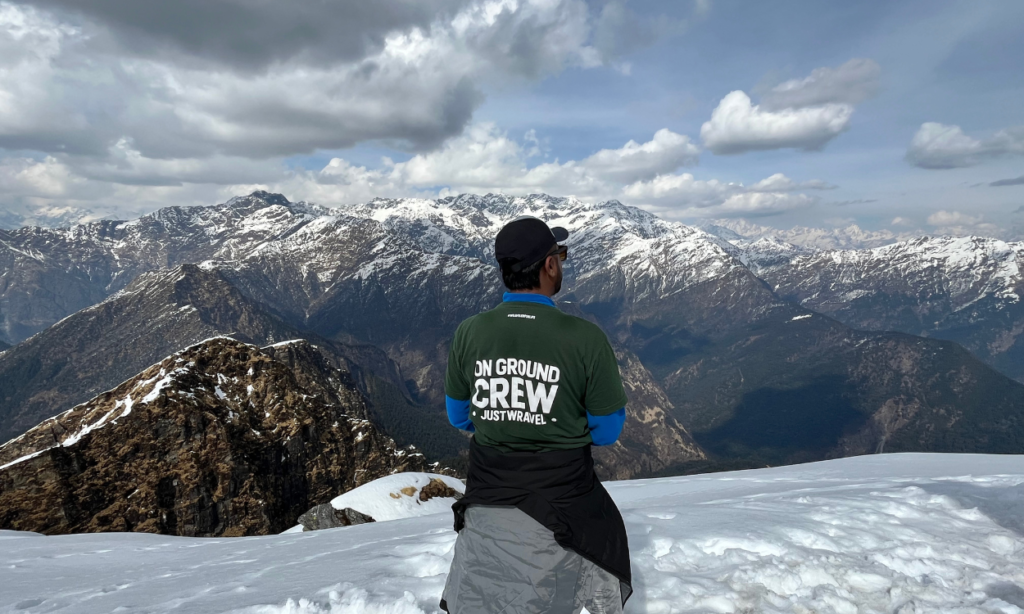
The Mystery of the Tungnath Temple’s Closure
Another hidden fact about Tungnath Temple is its seasonal closure. Due to its location in the high Himalayas, the temple remains closed for six months during the winter season, from November to April. The temple reopens in the summer months, and a special ritual is conducted to welcome the deity back.
The temple’s closure during the harsh winter months is an intriguing aspect of its operation. During this time, it is believed that Lord Shiva rests in his celestial abode, and no one is allowed to visit. This adds an air of mystery and reverence to the temple, as devotees eagerly await its reopening each year.
The Spiritual Calmness of the Region
A lesser-known fact about Tungnath Temple is the profound sense of peace and tranquility it offers. Whether you are trekking the Chopta Chandrashila trek or meditating at the temple, the spiritual calmness of the region is almost palpable. The silence of the mountains, combined with the cool, fresh air and the scent of pine and rhododendron trees, creates an atmosphere that allows visitors to connect deeply with nature and spirituality.
Many trekkers, after completing the Tungnath Temple trek, report a sense of inner peace and fulfillment, a reminder of the true purpose of the trek—not just to reach the destination but to experience the journey itself.
The Hidden Beauty of the Chopta Valley
Finally, the Chopta Valley, which serves as the base for the Chopta Tungnath trek, holds many secrets of its own. Known for its lush meadows and alpine forests, Chopta is a peaceful getaway that remains relatively unexplored compared to other trekking destinations in Uttarakhand. This hidden beauty makes it an ideal starting point for any trek, especially for those seeking solace in the midst of nature before venturing further into the mountains.

The Beauty of Snow-Covered Trails in Chopta: A Winter Wonderland in the Himalayas
Chopta, often referred to as one of the most picturesque destinations in Uttarakhand, transforms into a winter wonderland during the snow-covered months. The Chopta Tungnath trek and its surrounding areas offer trekkers and nature enthusiasts an extraordinary experience. When snow blankets the trails, it elevates the natural beauty of the region, making it an ideal spot for those seeking winter trekking adventures. The Chopta Chandrashila trek is particularly enchanting during this season, and the entire region becomes a haven for adventure seekers looking for an unforgettable Himalayan experience.
The Thrill of Snow-Covered Trails in Chopta
During the winter months, Chopta is enveloped in a thick blanket of snow, turning it into an idyllic setting for trekking. The Chopta Tungnath trek is one of the most popular winter treks in Uttarakhand, offering trekkers a chance to experience the pristine beauty of the snow-covered Himalayan landscape. As you trek through the frozen pathways, the snow-covered deodar and rhododendron trees create a magical atmosphere that transports you into a winter paradise.
The allure of snow-capped peaks, including the stunning Chandrashila summit, adds to the charm of this trek. The entire journey is infused with a sense of adventure, as trekkers navigate through icy slopes and rugged trails, all while soaking in the panoramic views of the surrounding mountains. Every step on the snow-covered trail feels like an exploration into the untouched beauty of the Himalayas.
Scenic Views Along the Chopta Tungnath Trek
The Chopta Tungnath trek takes you to one of the highest temples in India, the Tungnath Temple, which is not only a significant religious site but also an epic vantage point for winter trekkers. The trek’s difficulty is amplified by the snow, but the reward is worth every step. As you ascend the slopes, the snow-covered paths provide you with spectacular views of some of the highest peaks in the region, including Nanda Devi, Trishul, and Chaukhamba.
While the trek itself is challenging, the beauty of the landscape makes it all the more rewarding. The snow-covered trails of Chopta offer a stark contrast to the warm, sun-kissed days of the plains. The towering snow peaks seem to gleam in the winter light, making every photo and every step a memory to cherish. The Chopta Chandrashila trek is an added bonus, offering trekkers the opportunity to summit the Chandrashila peak, which offers even more breathtaking views of the snow-covered Himalayas.
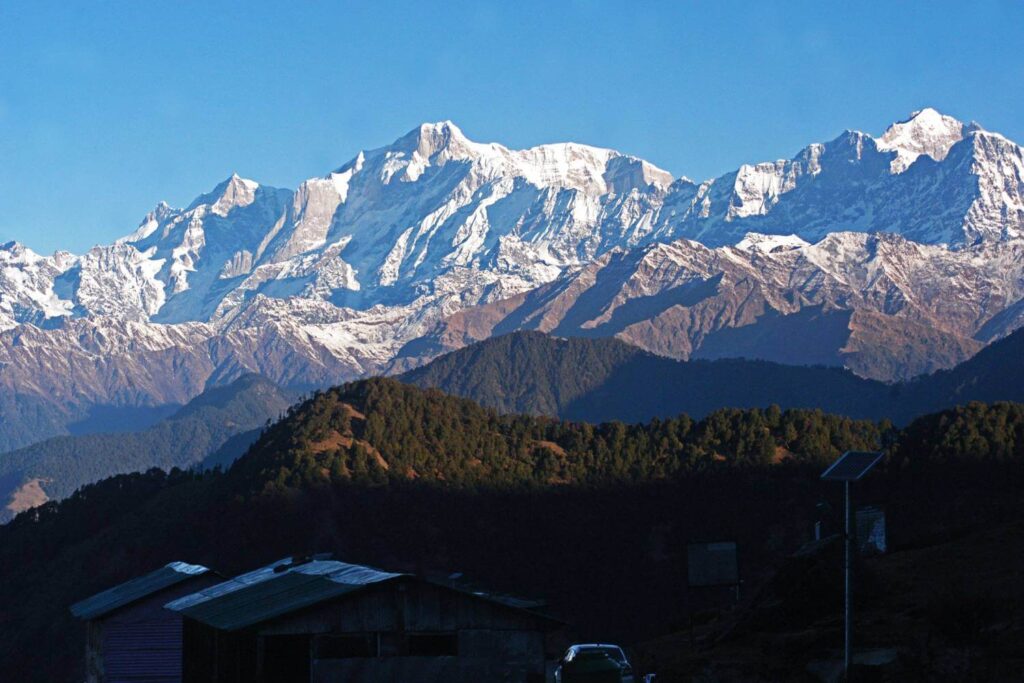
A Unique Winter Experience for Adventure Seekers
The Chopta Tungnath trek from Delhi and the Chopta Chandrashila trek from Delhi offer a unique winter adventure for trekkers who crave the chill of the snow-covered mountains. The experience of trekking in the Himalayas during winter is incomparable, as the frozen trails lead you to some of the most stunning and untouched landscapes in India. The crisp mountain air, combined with the peaceful solitude of the snow-covered forests, makes for an unforgettable trekking experience.
The Chopta tour package is perfect for those seeking a complete winter adventure, offering trekkers everything they need for a comfortable and thrilling experience. The region’s natural beauty is enhanced in winter, as the landscapes come alive with snowflakes that gently fall from the sky, creating a magical, serene environment.
Snowfall: The Highlight of Winter Treks in Chopta
For many trekkers, the most thrilling aspect of the Chopta Tungnath trek in winter is the snowfall itself. It’s not every day that one gets to trek through knee-deep snow, and the sight of fresh snowfall settling on the ground adds a layer of enchantment to the entire experience. The landscape becomes a blank canvas of white, and the serenity of walking in snow-covered paths adds a sense of tranquility.
Whether you’re trekking from Chopta Tungnath trek from Delhi or embarking on the Chopta Chandrashila trek, the snowfall enhances the entire experience. Snowflakes fall gently around you, transforming the region into an ethereal winter wonderland that feels like a dream. Each step on the snow-covered trail is an opportunity to appreciate the natural beauty of the Himalayas.
The Magic of Sunrise and Sunset Over the Snow-Capped Peaks
One of the most magical experiences during the Chopta Tungnath trek and Chopta Chandrashila trek is witnessing the sunrise and sunset over the snow-covered peaks. Early mornings in Chopta are nothing short of mesmerizing, with the first light of day casting a golden glow over the snow-covered mountains. The sun reflects off the snow, creating a dazzling display of colors that make every moment feel like a scene from a postcard.
As the day ends, the sunset paints the sky in shades of pink, orange, and purple, offering a spectacular view from the summit of Chandrashila or the Tungnath Temple. The contrast of the snow-covered peaks against the changing colors of the sky creates a surreal and breathtaking scene that will leave trekkers in awe.
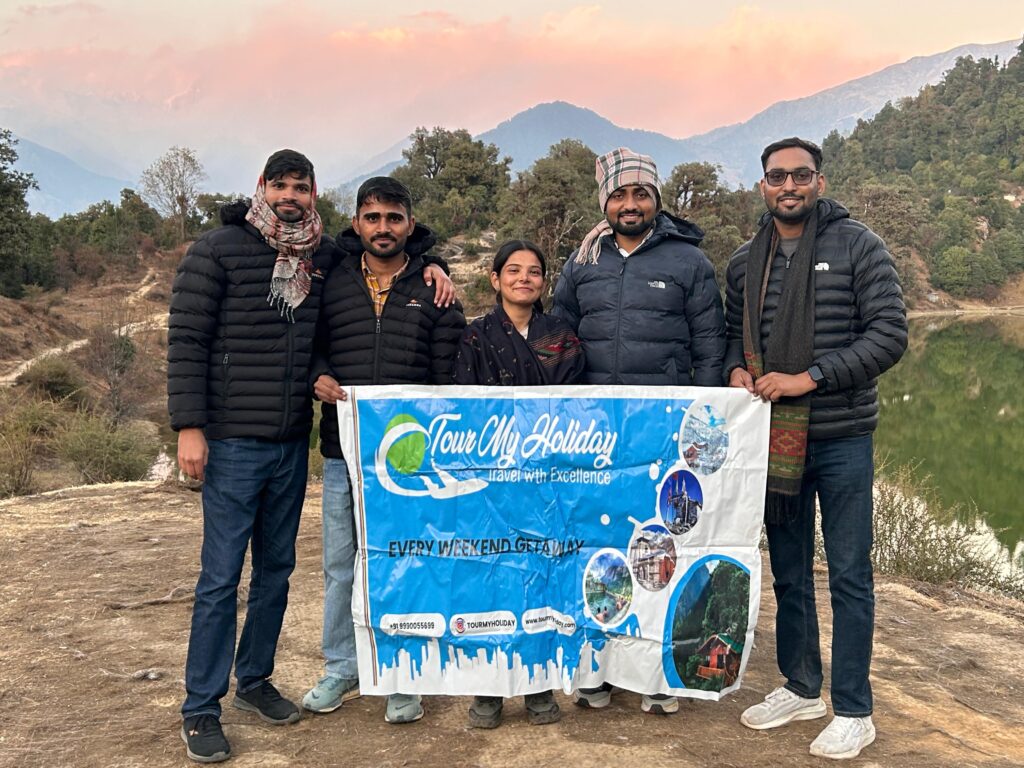
The Charm of Winter Camping in Chopta
Winter camping in Chopta is another thrilling activity that complements the Chopta Tungnath trek. Campers set up their tents amidst the snow-covered meadows, surrounded by towering peaks and dense pine forests. The experience of spending a night in the wilderness, with the cold winter air and the warmth of a campfire, is an unforgettable adventure.
The Chopta Chandrashila trek becomes even more enchanting when trekkers opt for a camping package that includes the chance to stay under a blanket of stars in the snow-covered region. The quiet of the winter nights, combined with the beauty of the snow-clad surroundings, makes winter camping in Chopta a must-try experience.
A Paradise for Photography Enthusiasts
For photography enthusiasts, Chopta in winter is a paradise. The Chopta Tungnath trek offers endless opportunities to capture the beauty of snow-covered trails, towering peaks, and the rich biodiversity that the region is known for. The snow adds an extra element to photographs, making the landscapes even more stunning.
The region’s untouched beauty, combined with the crisp winter air, creates a photographic landscape that is perfect for those looking to capture the Himalayas at their most serene and majestic. Whether you are trekking on the Chopta Chandrashila trek or simply exploring the surrounding meadows, you’ll find countless opportunities to snap photos that reflect the beauty of winter in the Himalayas.
The Spiritual Calmness of Snow-Covered Chopta
Finally, the Chopta tour packages offer a spiritual escape into the heart of the Himalayas. The snow-covered landscape adds a serene calmness to the environment, making it an ideal place for meditation and self-reflection. Many trekkers, after completing the Chopta Tungnath trek, take time to sit in the peaceful surroundings of Tungnath Temple and meditate, allowing the beauty of the snow-covered peaks to guide them toward spiritual growth.
In winter, the peaceful isolation and tranquility of Chopta are amplified, creating an atmosphere that encourages introspection and a deeper connection with nature and the divine.
Night Camping Under the Stars in Chopta: A Magical Himalayan Experience
Chopta, nestled in the majestic Himalayas, is not just a popular trekking destination; it also offers an incredible camping experience. The serene landscapes, combined with the beauty of the stars overhead, make night camping in Chopta an unforgettable adventure. Whether you’re trekking the Chopta Tungnath trek or the Chopta Chandrashila trek, camping under the stars allows you to fully immerse yourself in nature and the peace that comes with it. The Chopta tour package offers a unique opportunity for campers to spend a night surrounded by the stunning snow-covered peaks of the region, making it the perfect escape from the hustle and bustle of city life.
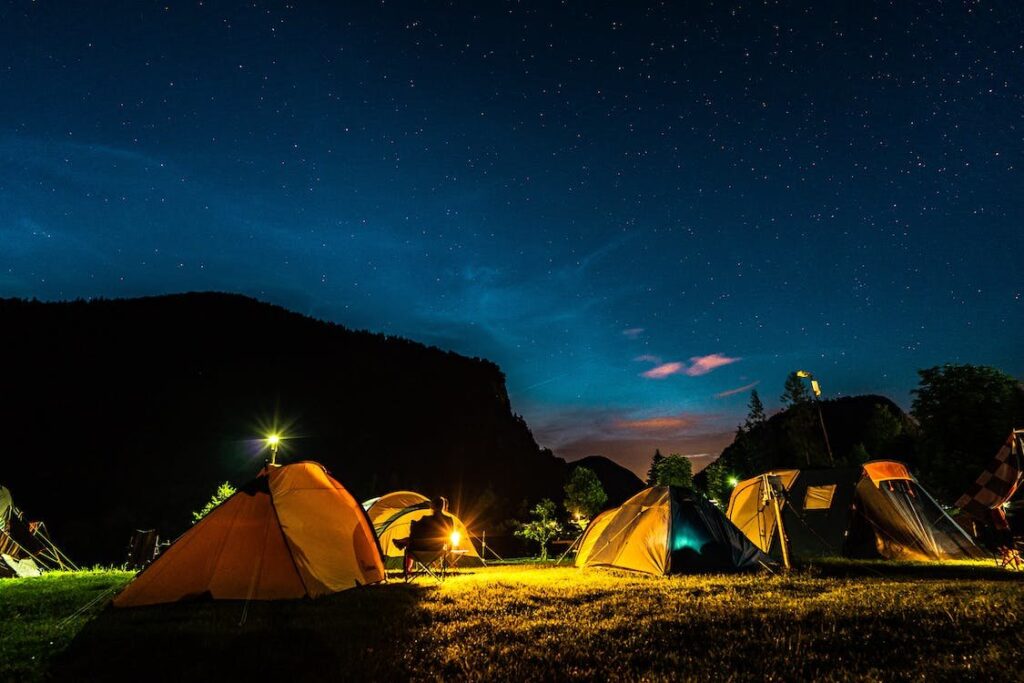
Setting Up Camp in Chopta: A Journey Into Nature
Camping in Chopta allows you to disconnect from the world and reconnect with nature. As you begin your Chopta Tungnath trek, the anticipation of spending a night under the Himalayan stars builds. Setting up camp in the meadows of Chopta, with views of snow-capped mountains and towering pine trees, is an experience that leaves a lasting impression. Trekking up to the Chopta Chandrashila trek also offers the opportunity to explore the beauty of this region before settling into your campsite for the night.
The peaceful surroundings, crisp mountain air, and the mesmerizing scenery are enough to make you feel at home in the heart of nature. After a long day of trekking, the prospect of a cozy campsite surrounded by the beauty of the Himalayas is the ultimate reward. Chopta tour packages often include camping options that provide all the necessary equipment, making it easy for trekkers to enjoy the natural beauty of the region without worrying about the logistics.
The Magic of the Stars: A Night Sky Like No Other
One of the biggest draws of camping in Chopta is the opportunity to witness a starry night that is unlike any other. The night sky in Chopta is clear, and away from the pollution of city lights, the stars seem brighter and closer. Lying back and gazing up at the vast expanse of stars is a surreal experience that adds an extra layer of magic to your trekking journey.
Whether you’re on the Chopta Tungnath trek or the Chopta Chandrashila trek, the stars seem to stretch endlessly above you, twinkling in a way that is almost hypnotic. The night sky, combined with the tranquil surroundings, creates a peaceful ambiance that allows you to disconnect from the noise of everyday life and experience the Himalayas in their purest form.
The Unique Charm of Winter Camping in Chopta
Winter camping in Chopta is particularly magical, especially for those embarking on the Chopta Tungnath trek or the Chopta Chandrashila trek during the snow-covered months. The region transforms into a snowy wonderland, and camping amidst the snow adds a layer of excitement to the experience. The crisp mountain air and the warmth of a campfire contrast beautifully with the icy surroundings, creating a cozy and inviting atmosphere for trekkers.
Winter camping in Chopta offers an unparalleled experience for adventure seekers, with the snow-covered trails and peaks creating a picturesque backdrop for your campsite. Whether you’re camping in the meadows near Tungnath Temple or further along the trek to Chandrashila, the beauty of winter camping in the Himalayas is something that must be experienced to be fully appreciated.
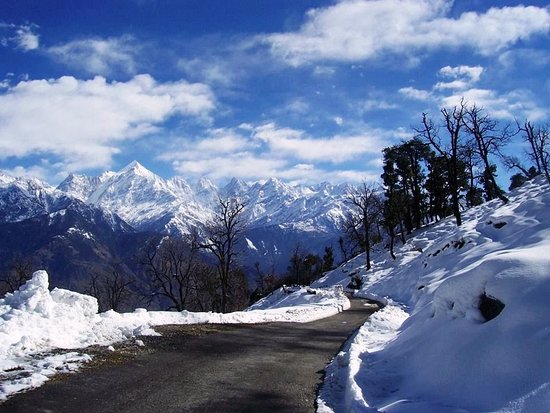
Experiencing the Serenity of Chopta’s Wilderness
Chopta’s wilderness provides a sense of peace that is hard to find in the modern world. The quiet solitude of the region, coupled with the breathtaking beauty of the landscape, allows trekkers to reconnect with themselves and nature. As you camp in the heart of the Himalayas, the only sounds you’ll hear are the rustling of the pine trees and the distant calls of wildlife.
The Chopta Chandrashila trek takes you to a place of great spiritual significance, and camping in the vicinity of the Tungnath Temple adds a unique dimension to the experience. The serene environment, combined with the stunning views of the Himalayas, creates a peaceful space for reflection and introspection. Spending the night under the stars, with the quiet of nature surrounding you, is a perfect way to find solace and reconnect with your inner self.
Cooking and Sharing Meals Around the Campfire
One of the highlights of camping in Chopta is the opportunity to cook and share meals around a crackling campfire. After a long day of trekking, gathering around the campfire to enjoy hot meals with fellow trekkers creates a sense of camaraderie and warmth. The warmth from the fire and the comforting aroma of food makes camping in the cold Himalayan nights all the more enjoyable.
Camp cooking during the Chopta Tungnath trek and Chopta Chandrashila trek is an experience in itself. Whether it’s a simple meal of rice and dal or a more elaborate dish, the joy of eating together in the wilderness, under the stars, creates lasting memories. This shared experience is one of the things that make camping in Chopta so special.
A Perfect Spot for Stargazing and Astronomy Enthusiasts
For stargazing enthusiasts, Chopta is a treasure trove of celestial wonders. The remote location of the region, far away from the bright lights of cities, allows for an unobstructed view of the night sky. Whether you’re a seasoned astronomer or just someone who loves gazing at the stars, Chopta’s night sky provides the perfect setting to observe planets, constellations, and shooting stars.
Camping in Chopta gives you the chance to spend an entire evening stargazing while sharing the experience with fellow trekkers. The Chopta Tungnath trek and Chopta Chandrashila trek both offer stunning vantage points from which to enjoy the night sky. The sight of the Milky Way stretching across the sky is a sight to behold and is a highlight of any camping trip in the region.

The Perfect End to a Trekking Day
After completing a challenging day of trekking, there is no better way to unwind than by camping under the stars in Chopta. The Chopta tour package often includes the chance to rest at a campsite after a day of trekking to Tungnath Temple or the Chandrashila summit, allowing trekkers to relax and enjoy the calm and peace that the region offers. The cool night air, combined with the warmth of the campfire, makes for the perfect end to a rewarding day.
The satisfaction of completing a trek like the Chopta Tungnath trek or Chopta Chandrashila trek, followed by the opportunity to relax under the stars, is an experience that stays with you long after you return home. The beauty of Chopta, both during the day and at night, is something that every trekker should experience at least once.
Best Time to Camp in Chopta
While Chopta offers an incredible camping experience year-round, the best time for camping under the stars is during the spring, summer, and early autumn months (March to October). During these months, the weather is more pleasant, and the trails are relatively clear of snow, making it easier for trekkers to navigate. The Chopta Tungnath trek and Chopta Chandrashila trek are at their most accessible during this time.
However, for those who enjoy the beauty of snow-covered landscapes, winter camping from December to February offers a different kind of challenge and charm. Trekking through snow-covered trails and camping in the cold winter air under the stars is a unique experience that adds an extra layer of adventure to your trip.
A Spiritual Connection with Nature
Camping in Chopta provides more than just adventure; it offers a chance to connect with nature and the divine. The Chopta Tungnath trek, which leads to the sacred Tungnath Temple, is a spiritual journey in itself. Spending the night in such a serene and peaceful environment enhances this connection, allowing trekkers to reflect on their journey and their inner self.
Whether you’re trekking to Chandrashila or exploring the surrounding meadows, camping in Chopta offers a sense of spirituality that is hard to find elsewhere. The combination of natural beauty, tranquility, and the sacred surroundings makes camping in Chopta a deeply fulfilling experience.
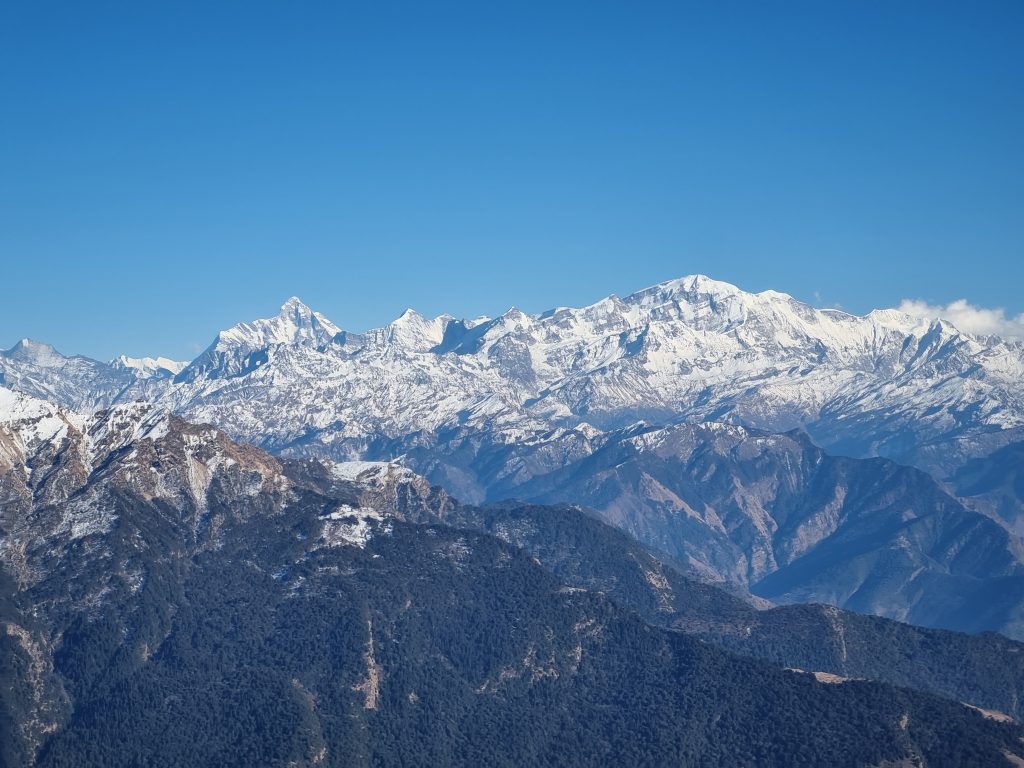
Festivals Celebrated Around Tungnath Temple: A Spiritual and Cultural Experience
The Tungnath Temple, perched at an altitude of 3,680 meters in the Uttarakhand Himalayas, is not only a spiritual landmark but also a hub for cultural and religious festivities. Known for its ancient history and religious significance, the temple is dedicated to Lord Shiva and attracts pilgrims and trekkers from all over the world, especially those embarking on the Chopta Tungnath trek. The festivals celebrated around Tungnath Temple are a unique blend of local traditions, spiritual fervor, and natural beauty. These festivals provide trekkers and visitors an opportunity to experience the rich culture of the region while undertaking an adventurous journey like the Chopta Chandrashila trek.
Maha Shivaratri: Celebrating Lord Shiva
Maha Shivaratri, one of the most important Hindu festivals, is celebrated with great enthusiasm at Tungnath Temple. Dedicated to Lord Shiva, this festival usually falls in February or March and attracts hundreds of devotees to the temple. Devotees gather at Tungnath Temple after completing the Chopta Tungnath trek to offer prayers and seek blessings for spiritual growth and prosperity.
On this day, pilgrims observe fasting, night vigils, and offer prayers to Lord Shiva. The entire region around Tungnath is filled with religious chants and rituals, creating a spiritually charged atmosphere. For trekkers, this is a perfect opportunity to witness the local religious traditions and feel a deep connection to the divine amidst the breathtaking surroundings of the Himalayas.
Kedarnath Badrinath Yatra and Tungnath Temple
Although the Kedarnath Badrinath Yatra is not specific to Tungnath, the proximity of Tungnath Temple to Kedarnath makes it a key stop for many pilgrims who are part of the larger Char Dham Yatra. Pilgrims who visit Tungnath Temple often take part in religious activities during the yatra season (April to November), which includes various ceremonies and rituals to honor the deities of Kedarnath, Badrinath, and Tungnath.
Tungnath, being a sacred site for Lord Shiva, is revered during this yatra. Devotees trek through the Chopta Tungnath trek or the Chopta Chandrashila trek to offer their prayers at the temple. The pilgrimage to Tungnath Temple during the Kedarnath Badrinath Yatra is marked by religious fervor, and the environment is vibrant with devotees’ chants and prayers.
Basant Panchami: Welcoming Spring with Color
Basant Panchami, a festival that celebrates the arrival of spring, is another significant celebration near Tungnath Temple. The festival usually falls in January or February and is marked by the blossoming of mustard fields and the warmth of the sun. In the Chopta region, Basant Panchami is celebrated with traditional rituals, including prayers and processions, that highlight the beauty of nature and the spirit of renewal.
While trekking the Chopta Tungnath trek during this time, trekkers can witness the vibrant mustard fields surrounding the area and the beginning of the spring season. The air is filled with the fragrance of flowers and the sounds of local music, creating an enchanting atmosphere. It is a great time for trekkers to explore the Chopta Chandrashila trek as the weather is pleasant, and the landscape is painted in beautiful hues of green and yellow.
Janmashtami: A Celebration of Lord Krishna’s Birth
Janmashtami, the celebration of Lord Krishna’s birth, is another festival observed in the nearby areas of Tungnath. Though the festival is primarily dedicated to Lord Krishna, it is celebrated with much enthusiasm in the towns and villages around Chopta. Local temples and shrines host events, and devotees celebrate with chanting, singing, and dancing.
While visiting the Chopta Tungnath trek during Janmashtami, trekkers can witness the rich cultural practices of the Garhwal region, including traditional dance and devotional songs. The atmosphere in the area becomes lively, filled with colorful decorations and festivities. The trek to Chandrashila and Tungnath Temple during this time also offers trekkers a chance to see the unique blend of spiritual and cultural traditions that are central to this festival.
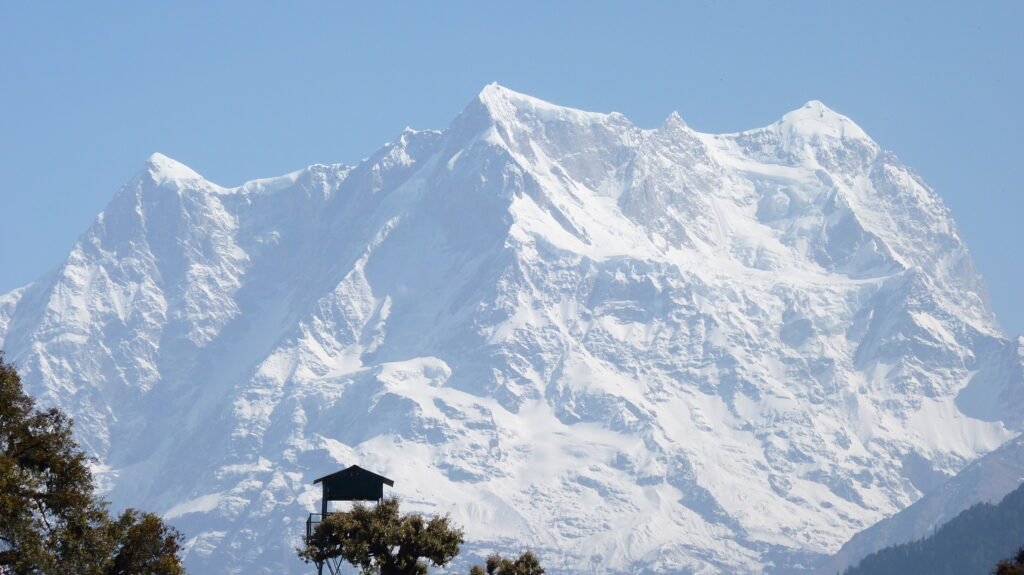
Diwali: The Festival of Lights in the Himalayas
Diwali, the Festival of Lights, is one of the most widely celebrated festivals in India, and its significance extends to the remote corners of Uttarakhand. During Diwali, the locals of Chopta and the surrounding villages celebrate with family gatherings, prayers, and the lighting of lamps. The glow of oil lamps and candles around Tungnath Temple during Diwali creates a magical atmosphere, transforming the entire region into a spiritual sanctuary.
If you visit Chopta during Diwali, you can experience the beauty of the Chopta Tungnath trek and Chopta Chandrashila trek while also witnessing the temple lit up with thousands of diyas (oil lamps). The cool Himalayan air and the warmth of the lit candles make for a serene and spiritually uplifting environment.
Ganga Dussehra: Honoring the Sacred Ganges
Though Ganga Dussehra is primarily celebrated along the Ganges River, the festival is also observed in various parts of Uttarakhand, including the region around Chopta. Ganga Dussehra honors the descent of the Ganges River to Earth and is marked by rituals, prayers, and cultural performances.
As trekkers complete the Chopta Tungnath trek or the Chopta Chandrashila trek, they may encounter local celebrations and processions dedicated to the Ganges. The reverence for water and the divine flow of the Ganges is central to this festival, and trekkers can take part in these rituals, gaining a deeper understanding of the region’s spiritual and cultural heritage.
Local Fairs and Cultural Celebrations
Apart from the major religious festivals, local fairs and cultural celebrations also take place around Tungnath Temple, especially during the summer months. These fairs are filled with traditional Garhwali music, dance, and handicraft displays. The fairs are a great way to experience the rich cultural heritage of the region while enjoying the natural beauty of the surroundings.
Trekking the Chopta Tungnath trek and Chopta Chandrashila trek during one of these fairs gives trekkers the opportunity to engage with the local community and immerse themselves in the festive atmosphere. The fairgrounds are often dotted with stalls selling local handicrafts, food, and souvenirs, making it an ideal place to experience the unique culture of the region.
Souvenirs and Handicrafts Unique to Chopta: Bringing Home the Spirit of the Himalayas
Chopta, a charming village nestled in the Garhwal region of Uttarakhand, is renowned for its breathtaking landscapes and the iconic Tungnath Temple trek. But beyond its natural beauty and spiritual significance, Chopta is also a treasure trove of unique souvenirs and handicrafts that reflect the rich cultural heritage of the region. From handcrafted jewelry to intricate woolen garments, these local handicrafts serve as perfect reminders of your Himalayan adventure. Whether you’re completing the Chopta Chandrashila trek or just soaking in the serene surroundings, these souvenirs will add a personal touch to your memories of the Chopta Tungnath trek and Chandrashila summit trek.
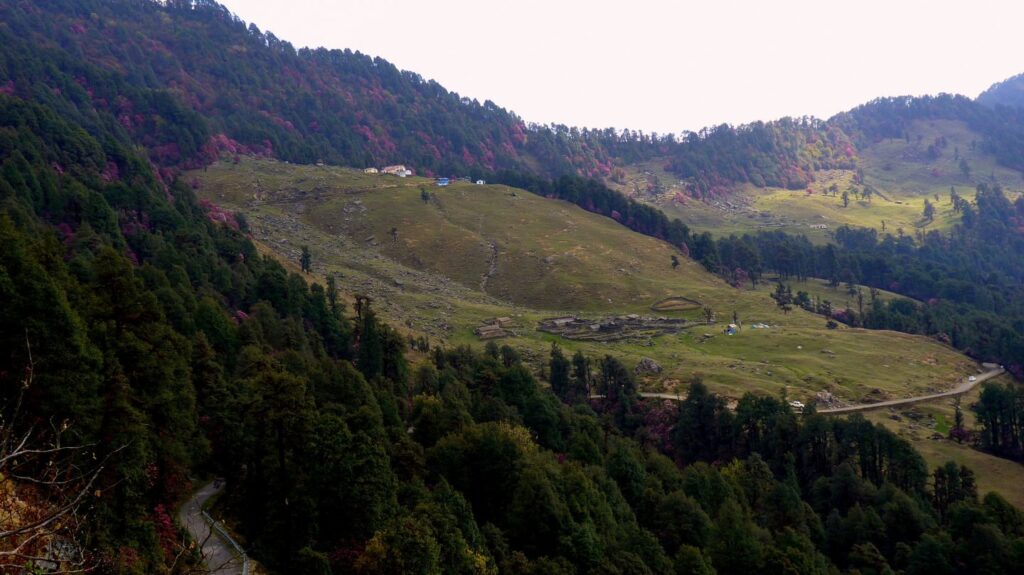
Woolen Shawls and Sweaters: A Cozy Keepsake
One of the most popular souvenirs in Chopta is its beautifully woven woolen shawls and sweaters. The region’s cold climate makes wool an essential part of local life, and the artisans here have mastered the craft of creating warm, cozy garments using high-quality wool. These items are often hand-spun and dyed using natural colors, reflecting the region’s sustainable approach to craftsmanship.
While trekking through Chopta Tungnath trek or Chopta Chandrashila trek, you can pick up these exquisite woolen shawls, scarves, and sweaters. They not only keep you warm during your journey but also make for a perfect memento to carry home. The intricate patterns often showcase the artistic traditions of the Garhwal region, making them a special piece of Himalayan heritage.
Pashmina Woolen Products
For those seeking a more luxurious souvenir, Pashmina woolen products are a must-buy. Pashmina, known as the “soft gold of Kashmir,” is highly prized for its fine quality and softness. Chopta is known to have some exquisite Pashmina shawls, stoles, and scarves that are handcrafted by local artisans.
Pashmina products make a great gift or personal keepsake from your Chopta Tungnath trek. These items are lightweight, yet incredibly warm, and their intricate designs often feature motifs inspired by nature. Whether it’s a stylish shawl or a soft scarf, Pashmina products offer a blend of tradition and luxury that are perfect for any occasion.
Handcrafted Jewelry: Adorn Yourself with Himalayan Artistry
Local artisans in Chopta create beautiful handcrafted jewelry, often made from locally sourced materials such as copper, silver, and wood. The jewelry pieces are often inspired by the natural surroundings of the Himalayas, with designs featuring motifs like mountains, flowers, and trees.
Whether you’re on the Chopta Chandrashila trek or simply exploring the village, you’ll find a range of jewelry items, including earrings, necklaces, bracelets, and rings. These pieces make for unique souvenirs, allowing you to take a piece of the Chopta Tungnath trek with you. The craftsmanship of these pieces is a testament to the skill and creativity of local artisans.
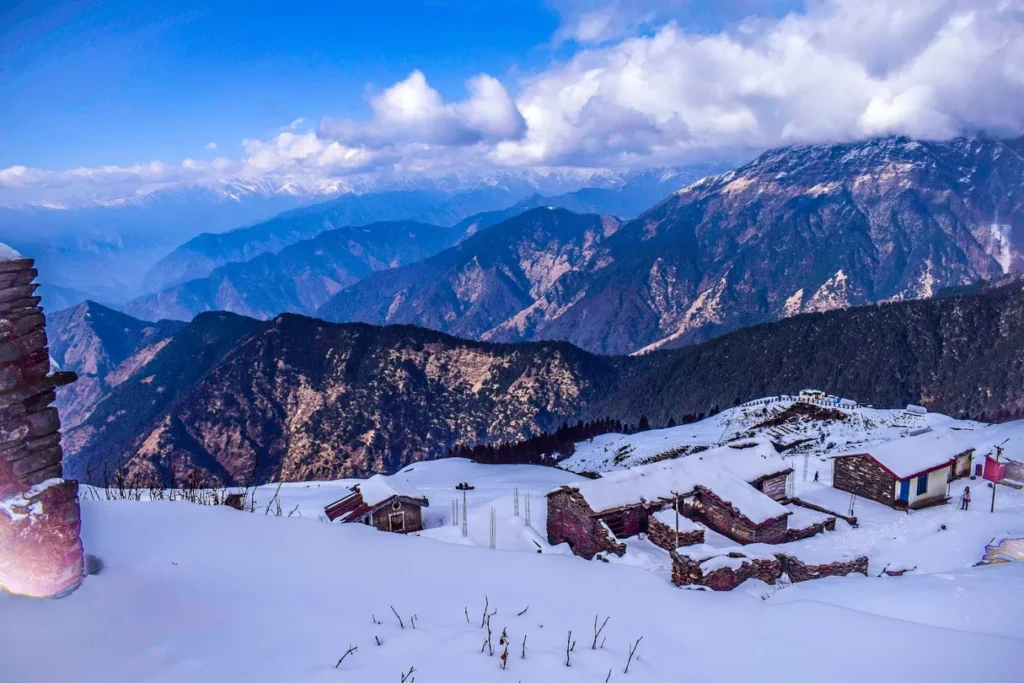
Hand-painted Wooden Articles
Wooden handicrafts are another highlight of Chopta’s vibrant craft culture. Local artisans carve and paint wooden items, such as wall hangings, decorative boxes, and religious figurines, often incorporating symbols from Hindu mythology. These hand-painted wooden articles are not only beautiful but also offer a glimpse into the region’s rich spiritual life.
If you’re on the Chopta Tungnath trek, consider purchasing these hand-painted wooden souvenirs to take back home. The intricate designs often feature scenes from nature, gods, and goddesses, making them a spiritual keepsake from your trek to Tungnath Temple and Chandrashila summit trek.
Local Spices and Herbal Products
For food lovers and those seeking unique flavors, Chopta offers a variety of locally grown herbs and spices. The region’s temperate climate is ideal for the cultivation of a range of aromatic herbs, including wild thyme, rosemary, and oregano. These herbs are often packaged into small sachets or bottles and sold as souvenirs.
In addition to herbs, you can find various locally produced Ayurvedic products, including essential oils, soaps, and natural creams. These products are made using traditional methods and natural ingredients sourced from the surrounding forests. Whether you’re purchasing them as a gift or for your own use, these herbal products are a great way to bring the essence of the Himalayas back home from your Chopta Tungnath trek.
Traditional Garhwali Carpets and Rugs
Carpets and rugs from the Garhwal region are known for their durability and unique designs. Handwoven by local artisans, these carpets often feature patterns that are inspired by the natural landscape of the Himalayas. The use of wool makes these carpets both beautiful and functional, providing warmth during the chilly winter months.
During your trek to Tungnath Temple or Chandrashila, you may come across local markets offering these exquisite handwoven carpets. They can be found in a variety of sizes and designs, making them perfect for adorning your home with a touch of Himalayan charm. Purchasing a Garhwali carpet or rug from the region not only supports local artisans but also brings a piece of Chopta tour packages home with you.
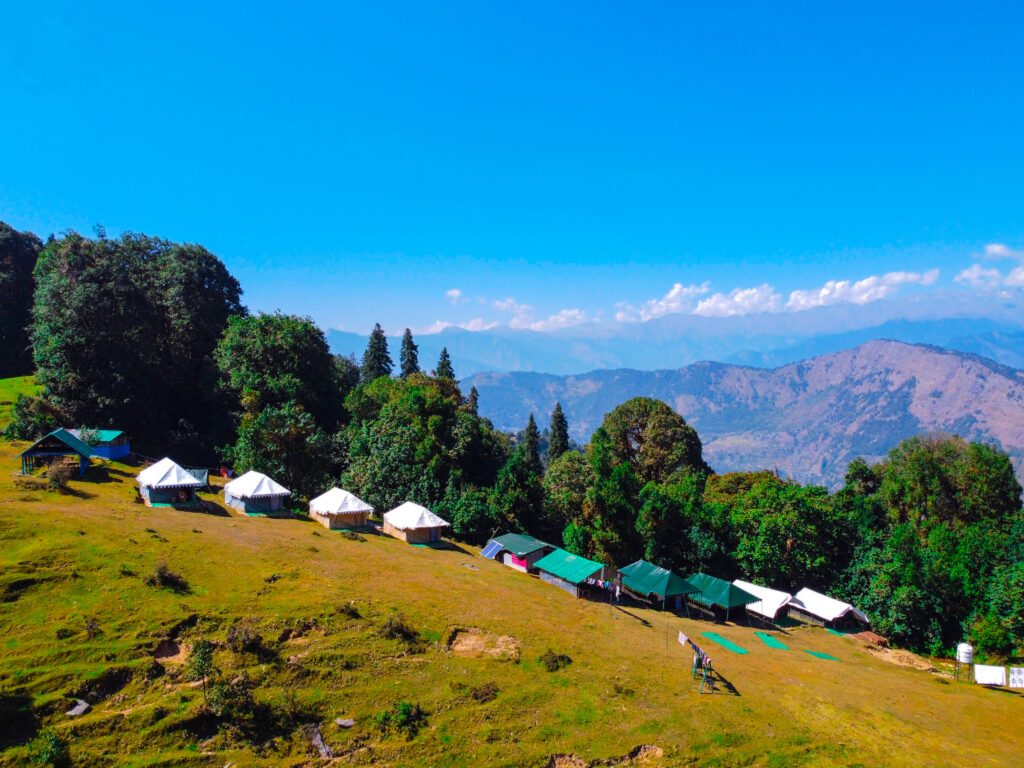
Bamboo and Wooden Kitchenware
For those who appreciate functional and eco-friendly souvenirs, bamboo and wooden kitchenware are a great choice. Locally crafted by artisans, these items include wooden spoons, bamboo baskets, chopping boards, and ladles. The craftsmanship and attention to detail are evident in every piece, making them not only practical but also unique pieces of art.
These bamboo and wooden items make great gifts or personal keepsakes from your trek. They serve as a reminder of the region’s natural beauty and sustainable living practices. If you’re taking the Chopta Tungnath trek from Delhi, make sure to stop by the local markets and pick up some of these handcrafted treasures to remember your journey by.
Local Herbal Tea Blends
The cool climate of Chopta is perfect for growing a variety of herbs and plants, many of which are used to create herbal teas. From soothing chamomile to refreshing mint, the region’s herbal teas are known for their natural flavors and healing properties. Local shops offer these tea blends in small packets, often alongside traditional tea sets.
A packet of local herbal tea makes for an excellent gift or souvenir. It’s a perfect way to share the tranquility of the Himalayas with your loved ones. Whether you’re sipping tea at the end of a long day on the Chopta Tungnath trek or enjoying a quiet moment at Chopta Chandrashila trek, this herbal blend is a reminder of the peacefulness of the region.
Prayer Flags and Religious Artifacts
No visit to Tungnath Temple is complete without a stop to purchase traditional prayer flags or religious artifacts. Tibetan prayer flags, often seen fluttering in the wind around Tungnath Temple, are sold in local markets. These flags, imbued with mantras and prayers, are believed to carry blessings across the mountains with every breeze.
Religious artifacts, such as small statues of Lord Shiva, prayer wheels, and brass lamps, are also available for purchase. These items serve as spiritual mementos of your time spent in this sacred place, whether you’ve trekked the Chopta Chandrashila trek or visited the temple.
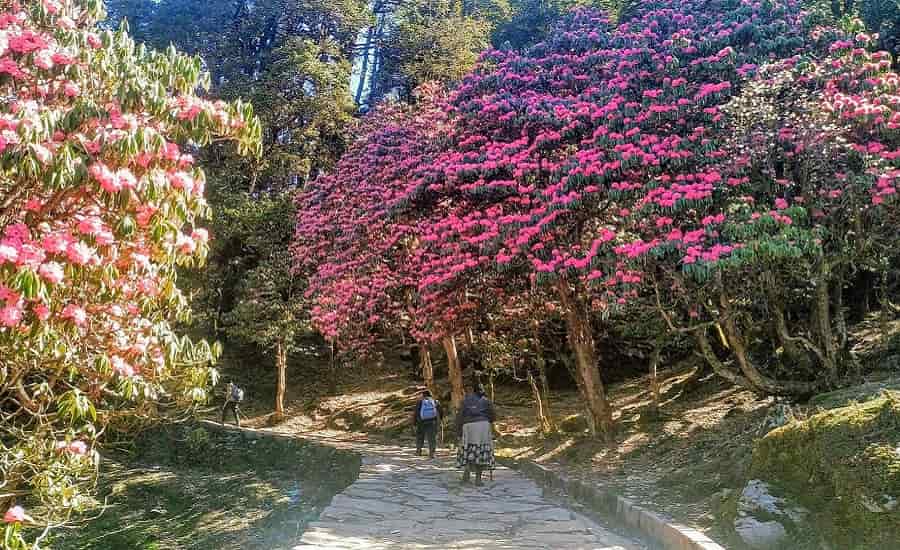
Managing Weather Changes During Chopta Adventures: A Comprehensive Guide
Chopta, known for its scenic landscapes and adventure-filled treks like the Chopta Tungnath trek and Chandrashila summit trek, attracts travelers seeking an escape into the peaceful and pristine beauty of the Himalayas. However, one of the biggest challenges during your adventure in Chopta is navigating the unpredictable weather conditions. The region experiences rapid weather changes, ranging from sunny skies to unexpected snowstorms, especially during the winter trekking season. If you are planning a Chopta Chandrashila trek or any Chopta tour packages, understanding and preparing for these changes is essential for a safe and enjoyable experience.
Here’s a guide to help you manage weather changes during your Chopta Tungnath trek from Delhi or Chopta Chandrashila trek from Delhi. By equipping yourself with the right knowledge and gear, you can ensure that your Himalayan adventure is as smooth as possible.
The Varied Climate of Chopta: What to Expect
Chopta is known for its diverse weather conditions, which can change rapidly due to its high-altitude location. Depending on the season, weather can range from warm days to freezing nights, and sudden downpours or snowfall are not uncommon. Understanding the climate of Chopta helps you prepare for weather changes while on your Chopta Tungnath trek or Chopta Chandrashila trek.
- Summer (March to June): During this period, Chopta’s weather is relatively mild, with temperatures ranging from 10°C to 20°C. The days are warm, but evenings can get chilly, especially in the higher altitudes like Tungnath Temple. Summer is ideal for trekking, but occasional showers may occur.
- Monsoon (July to September): The monsoon season brings heavy rainfall, which can lead to slippery trails and limited visibility. The Chopta Tungnath trek may become muddy, and trekking routes could be blocked by landslides. It’s best to avoid trekking during this season unless you are experienced in managing monsoon treks.
- Winter (October to February): Chopta experiences snowfall during the winter months, with temperatures often dropping below freezing. The Chandrashila summit trek and Chopta Tungnath trek become a winter wonderland during this time, but the cold temperatures and snowstorms require careful planning.
By being aware of Chopta’s weather patterns, you can adjust your trekking plans and pack accordingly to ensure your safety and enjoyment.
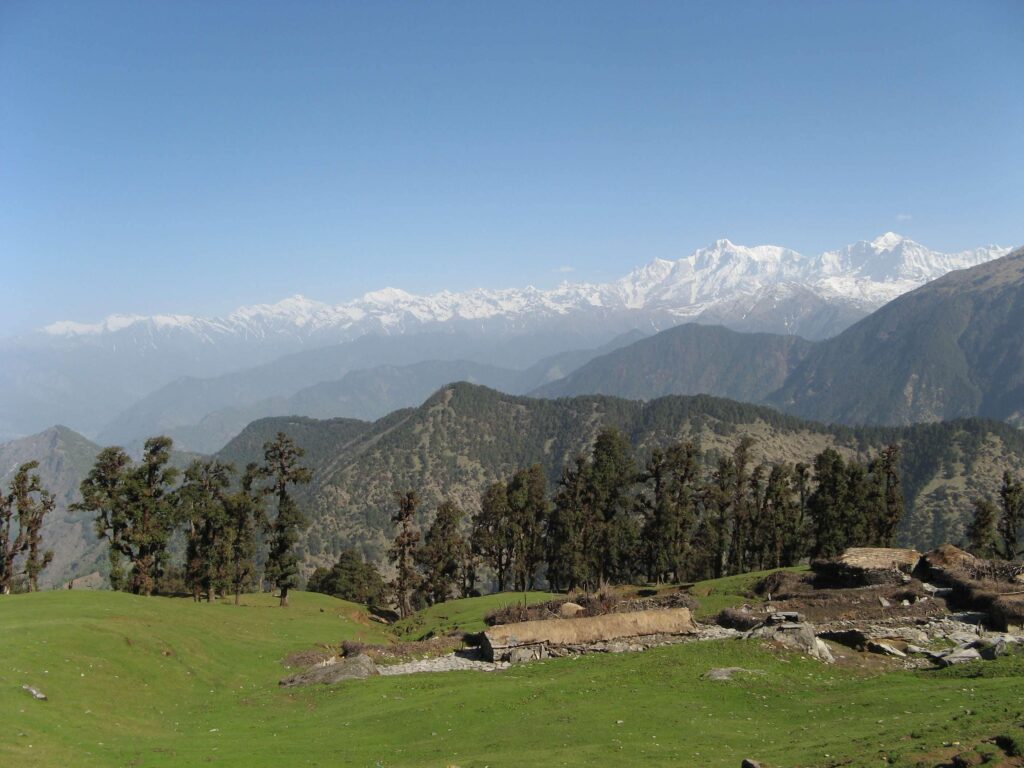
Packing the Right Gear for Weather Variability
One of the best ways to manage weather changes during your Chopta tour packages is by packing the right gear. From freezing temperatures to sudden rainfall, being prepared can make all the difference in maintaining your comfort and safety. Below are some key items to include in your trekking gear:
- Layered Clothing: Layering is essential when trekking in Chopta, especially during the Chopta Tungnath trek and Chopta Chandrashila trek. Start with moisture-wicking base layers to keep sweat away from your skin, followed by an insulating layer to retain body heat. A waterproof and windproof outer layer will protect you from rain and cold winds.
- Warm Clothing: Even during the summer months, temperatures can drop unexpectedly, particularly at higher altitudes like Chandrashila summit trek. Bring thermal jackets, gloves, hats, and warm socks, as these can make a significant difference in your comfort, especially during the cold nights in campsites.
- Rain Gear: Carry a durable rain jacket and waterproof pants, as well as a poncho or rain cover for your backpack. The weather in Chopta can change quickly, and sudden rain showers are common, particularly in the monsoon season. Waterproof footwear is also recommended to keep your feet dry on muddy or wet trails.
- Sun Protection: Even if it’s cold, the sun’s UV rays can be harsh at high altitudes. Carry sunscreen, lip balm, sunglasses, and a wide-brimmed hat to protect your skin from sunburn.
- Camping Equipment: For trekkers opting for Chopta camping packages, ensure that your tent, sleeping bag, and mat are suited for the cold, especially in winter. A 4-season sleeping bag and a warm mat will help you stay comfortable during chilly nights at higher altitudes.
Managing Sudden Temperature Drops and Cold Weather
When trekking in Chopta, especially during the winter months, you’ll often experience sudden temperature drops that can be challenging to manage. This is especially true for trekkers heading to the Tungnath Temple trek and Chandrashila summit trek, where temperatures can dip below freezing at night.
Here are some tips to manage cold weather:
- Stay Active: Keep moving when trekking in cold conditions, as physical activity helps maintain body heat. Take regular breaks to hydrate and eat, but avoid standing still for long periods in the cold.
- Hydration and Nutrition: Drink plenty of water to prevent dehydration, which can exacerbate the effects of the cold. High-energy snacks like nuts, chocolate, and energy bars are great for providing quick energy during the Chopta Tungnath trek.
- Warm Up Before Sleeping: Before heading to bed in your tent, take a short walk or do some light stretching to increase circulation. You can also use hand warmers or a hot water bottle to warm up your sleeping bag.
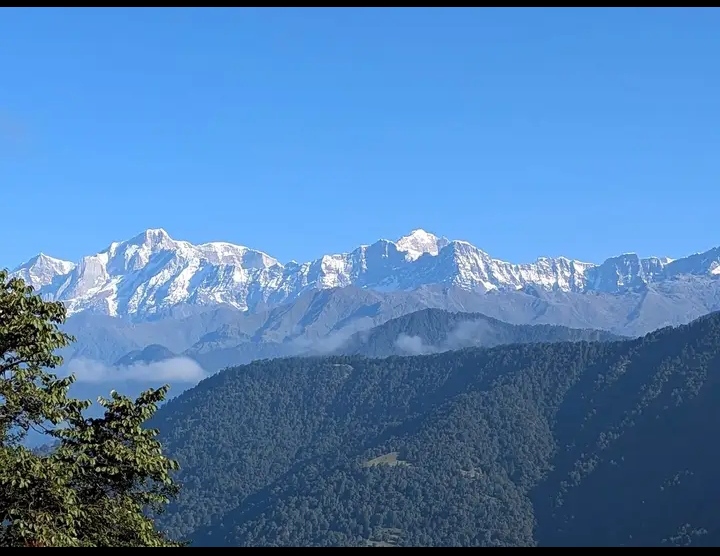
Navigating Snow and Ice on the Trails
Snowfall is common in Chopta during winter, especially when trekking towards Chandrashila summit trek or the Tungnath Temple trek. Snow-covered trails can present additional challenges such as slippery paths and reduced visibility. Here’s how to manage these conditions:
- Wear Proper Footwear: Sturdy waterproof boots with good traction are essential when trekking in snow. Consider wearing microspikes or crampons if you’re trekking on icy terrain. These devices fit over your boots and provide extra grip, making them ideal for the snow-covered Chopta Tungnath trek.
- Trekking Poles: A pair of trekking poles can provide stability and balance while navigating slippery or uneven terrain. These poles can also help reduce strain on your knees during descents, which can be challenging in snow.
- Keep an Eye on the Weather: Always check the weather forecast before setting out on your trek. Snowstorms can arrive unexpectedly, especially in the winter, so it’s important to stay updated and prepared for such changes.
Understanding Altitude and Its Effects on Weather
Chopta’s trekking trails, including the Chopta Chandrashila trek, reach altitudes of over 2,600 meters, which can have an impact on both weather and your body. The higher you go, the colder and windier it gets. Additionally, altitude sickness can occur due to reduced oxygen levels.
Here’s how to manage altitude and weather:
- Acclimatization: Spend an extra day in Chopta or a nearby village to acclimatize before starting your trek. This helps your body adjust to the higher altitudes, reducing the chances of altitude sickness.
- Take It Slow: Avoid rushing during the trek to allow your body to adjust. Pace yourself during the Chopta Tungnath trek to prevent exhaustion, as rapid altitude gains can increase the risk of altitude sickness.
- Monitor Symptoms: If you experience symptoms like dizziness, nausea, or shortness of breath, descend to a lower altitude immediately and rest. Always listen to your body and adjust your plans accordingly.
The Importance of Local Knowledge and Guides
When trekking in Chopta, especially on more challenging routes like the Chopta Chandrashila trek from Delhi, it’s always advisable to hire a local guide. They have an intimate knowledge of the region’s weather patterns and can assist with navigating the trails safely.
Local guides are experienced in handling sudden weather changes, knowing the best routes to take in case of heavy snow or rain, and ensuring that you’re prepared for whatever the weather might throw at you. They can also provide valuable tips on how to manage weather conditions during the Chopta Tungnath trek from Delhi and beyond.
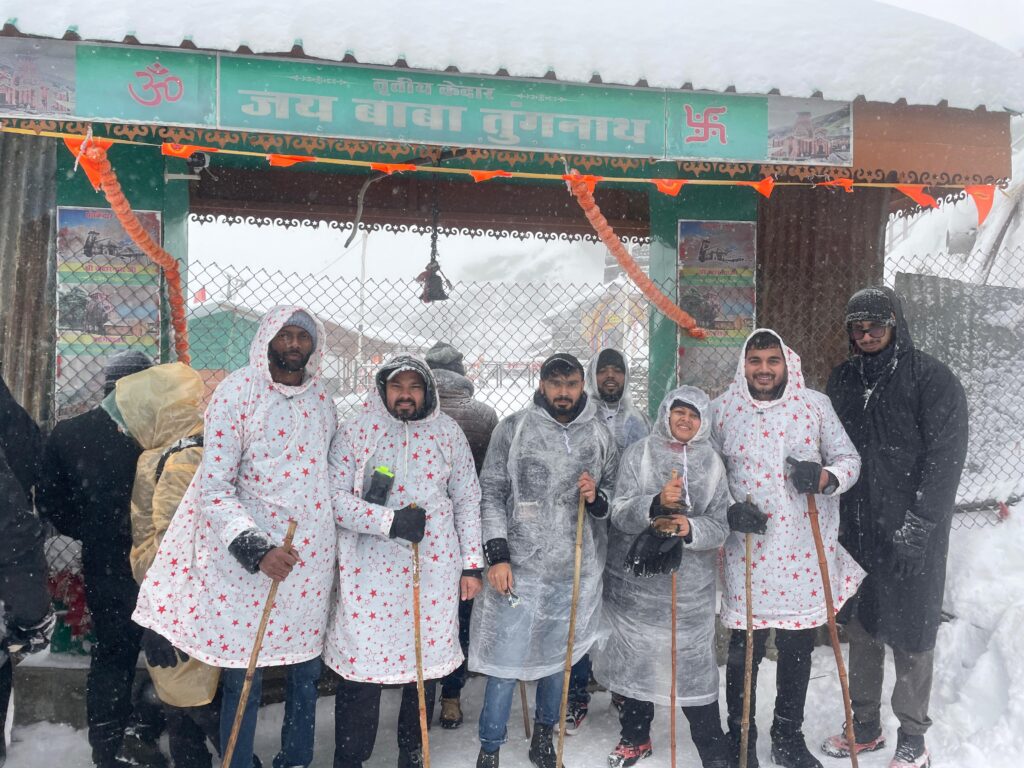
Frequently Asked Questions(FAQ)
What is the weather like in Chopta?
Chopta experiences a diverse range of weather conditions depending on the season. In summer, the temperatures are mild, ranging from 10°C to 20°C. During the monsoon season, heavy rainfall can cause slippery trails. In winter, temperatures can drop below freezing, and the area often experiences snowfall, especially at higher altitudes like Tungnath Temple and Chandrashila summit.
How should I prepare for the weather in Chopta?
To prepare for the unpredictable weather in Chopta, pack layered clothing, including moisture-wicking base layers, insulating layers, and waterproof outer layers. Warm clothing such as thermal jackets, hats, gloves, and socks is essential, even in the summer. Additionally, carry rain gear, sun protection, and proper footwear suited for both wet and snowy conditions.
When is the best time to visit Chopta?
The best time to visit Chopta for trekking is during the summer (March to June) and winter (October to February). The summer offers mild temperatures, making it ideal for treks like Chopta Tungnath trek and Chandrashila trek. Winter, on the other hand, provides a magical snow-covered landscape, perfect for winter treks, though temperatures can be very cold.
Can I trek in Chopta during the monsoon?
Monsoon season (July to September) is not recommended for trekking in Chopta, as the trails become slippery and unsafe due to heavy rainfall. The monsoon also increases the risk of landslides and poor visibility, making trekking difficult and dangerous, especially on higher trails like the Chopta Chandrashila trek.
How cold does it get in Chopta during winter?
During winter, temperatures in Chopta can drop to as low as -5°C or lower, especially at higher altitudes like Chandrashila summit trek. Nights can be extremely cold, with frost and snow covering the ground, making proper winter gear essential to stay warm and comfortable.
What should I pack for a winter trek in Chopta?
For a winter trek in Chopta, pack a 4-season sleeping bag, warm clothes, including thermals, insulated jackets, and waterproof pants. Don’t forget sturdy waterproof boots, woolen socks, gloves, a hat, trekking poles, and snow protection gear like microspikes or crampons for snowy conditions.
How can I manage sudden weather changes during my trek?
To manage sudden weather changes in Chopta, stay informed about the weather forecast and always be prepared for changes. Pack layered clothing that can be adjusted according to the weather and carry rain gear to protect against sudden showers. Trekking with a local guide also helps as they can anticipate weather changes and recommend the best actions.
Is altitude sickness a concern in Chopta?
Chopta’s trekking routes, including Chopta Tungnath trek and Chandrashila summit trek, reach altitudes above 2,600 meters, which can lead to altitude sickness. Symptoms include dizziness, nausea, and headaches. To minimize the risk, acclimatize by spending extra time at lower altitudes, drink plenty of water, and avoid exerting yourself too quickly.
Can I trek in Chopta during the winter if I’m a beginner?
Winter trekking in Chopta can be challenging, especially for beginners. The snow-covered trails and freezing temperatures require proper preparation and experience. If you are a beginner, it’s recommended to trek with an experienced guide, and possibly opt for less challenging routes like Chopta Tungnath trek during the earlier part of winter.
What type of footwear is best for Chopta trekking?
Sturdy, waterproof boots with good traction are essential for trekking in Chopta, especially during winter or the monsoon season when trails can be muddy or slippery. In winter, consider boots with insulation to keep your feet warm, and wear gaiters to prevent snow from getting inside your boots.
How can I prepare for snow-covered trails in Chopta?
When trekking on snow-covered trails like the Chopta Tungnath trek, make sure you wear waterproof, insulated boots with good grip. Carry trekking poles to help with balance, and wear microspikes or crampons for additional traction on icy surfaces. Always check weather conditions before heading out, as snowstorms can occur suddenly.
What should I do if I get caught in a snowstorm during the trek?
If you get caught in a snowstorm while trekking in Chopta, it’s important to find shelter immediately. If you are near a campsite or forest, take cover and wait for the storm to pass. Keep yourself warm by wearing all available layers and consuming high-energy snacks. Avoid trekking further until the weather improves.
How do I stay warm during the night in Chopta?
During the cold nights in Chopta, it’s essential to stay warm by layering your clothing. Use a high-quality 4-season sleeping bag, and place a warm mat beneath your sleeping bag. You can also use hand warmers and a hot water bottle to keep your body warm during the night, particularly at higher altitudes like Chandrashila summit trek.
What is the risk of landslides during the monsoon?
Landslides are a real risk during the monsoon season in Chopta due to heavy rainfall. The constant rain can loosen rocks and debris, making trails unsafe. It’s advisable to avoid trekking in Chopta during the monsoon, or at least check for trail conditions and landslide warnings before setting off.
Can I camp in Chopta during the winter?
Yes, you can camp in Chopta during the winter, but it requires proper preparation due to the freezing temperatures. Opt for winter camping packages and ensure you have the right camping gear, such as insulated tents, sleeping bags, and warm clothing. Always check weather forecasts and avoid setting up camp in areas prone to snowstorms.
How do I deal with slippery trails in Chopta during the monsoon?
During the monsoon, trails in Chopta become muddy and slippery. To navigate safely, wear waterproof boots with good tread for traction. Using trekking poles helps maintain balance on slippery sections, and walking carefully on steep and wet paths will reduce the risk of slipping.
Is there a risk of flooding in Chopta?
Flooding is a concern in Chopta during the monsoon season due to heavy rainfall and potential landslides. Some trails, especially near rivers or streams, may become dangerous. Always check local weather reports and be cautious about trekking routes near flood-prone areas during the monsoon.
How does the weather impact the visibility on treks?
During cloudy or rainy days, visibility on treks in Chopta can be reduced, especially at higher altitudes. This can make navigating trails like the Chopta Chandrashila trek more challenging. It’s essential to have a guide who knows the area and can help you find your way if visibility is poor.
Can I trek solo in Chopta?
While trekking solo in Chopta is possible, it’s advisable to do so with caution, especially in unpredictable weather. The Chopta Tungnath trek and Chandrashila summit trek can be challenging, particularly in winter or monsoon. It’s recommended to trek with a guide or as part of a group for safety, especially during adverse weather conditions.
How do I stay safe from hypothermia in Chopta?
Hypothermia is a risk in Chopta, especially in winter, when temperatures can drop below freezing. To avoid hypothermia, wear layered clothing to stay warm, drink warm liquids, and consume high-calorie foods. If you start feeling too cold or wet, find shelter and warm up as soon as possible. Be aware of the symptoms of hypothermia, such as shivering, confusion, and numbness.
Can I visit Chopta if I have no trekking experience?
Yes, you can visit Chopta even if you have no trekking experience, but it’s best to choose easier routes such as the Chopta Tungnath trek or opt for guided Chopta camping packages. Beginners should avoid challenging treks during the winter or monsoon seasons and start with shorter, more manageable hikes.
How do I know if the trek is safe to undertake during bad weather?
Before heading out on a trek in Chopta, always check the weather forecast and trail conditions. In case of adverse weather, such as snowstorms, heavy rain, or extreme cold, it’s best to delay or cancel your trek. Always stay informed through local guides or tour operators, as they will have the most up-to-date information about trail safety.
How can I prepare for high-altitude weather in Chopta?
To prepare for high-altitude weather in Chopta, acclimatize by spending a day or two at a lower altitude before starting your trek. Drink plenty of water to stay hydrated and avoid strenuous activity during the first few days. Always carry extra layers, as temperatures can drop quickly at higher elevations like Chandrashila summit trek.
What type of weather-related challenges should I expect during the Chopta Tungnath trek?
During the Chopta Tungnath trek, you might encounter fluctuating temperatures, sudden rain, or snow, especially as you gain altitude. Proper clothing and gear are necessary to handle cold winds, snow, and possible rain. Always check the weather forecast before your trek and be prepared for changing conditions.
Are there any weather warnings I should look out for before trekking in Chopta?
Before trekking in Chopta, keep an eye on weather warnings for snowstorms, heavy rainfall, or landslides. Local weather services and your guide will provide updates. In case of extreme conditions like a snowstorm or heavy rainfall, it’s advisable to postpone the trek until the weather improves.
Is there a danger of avalanches in Chopta?
Avalanches are a risk in high-altitude areas like Chandrashila summit trek, especially after fresh snowfall. It’s essential to check weather forecasts, avoid trekking immediately after a heavy snowfall, and trek with an experienced guide who can assess avalanche risk.

